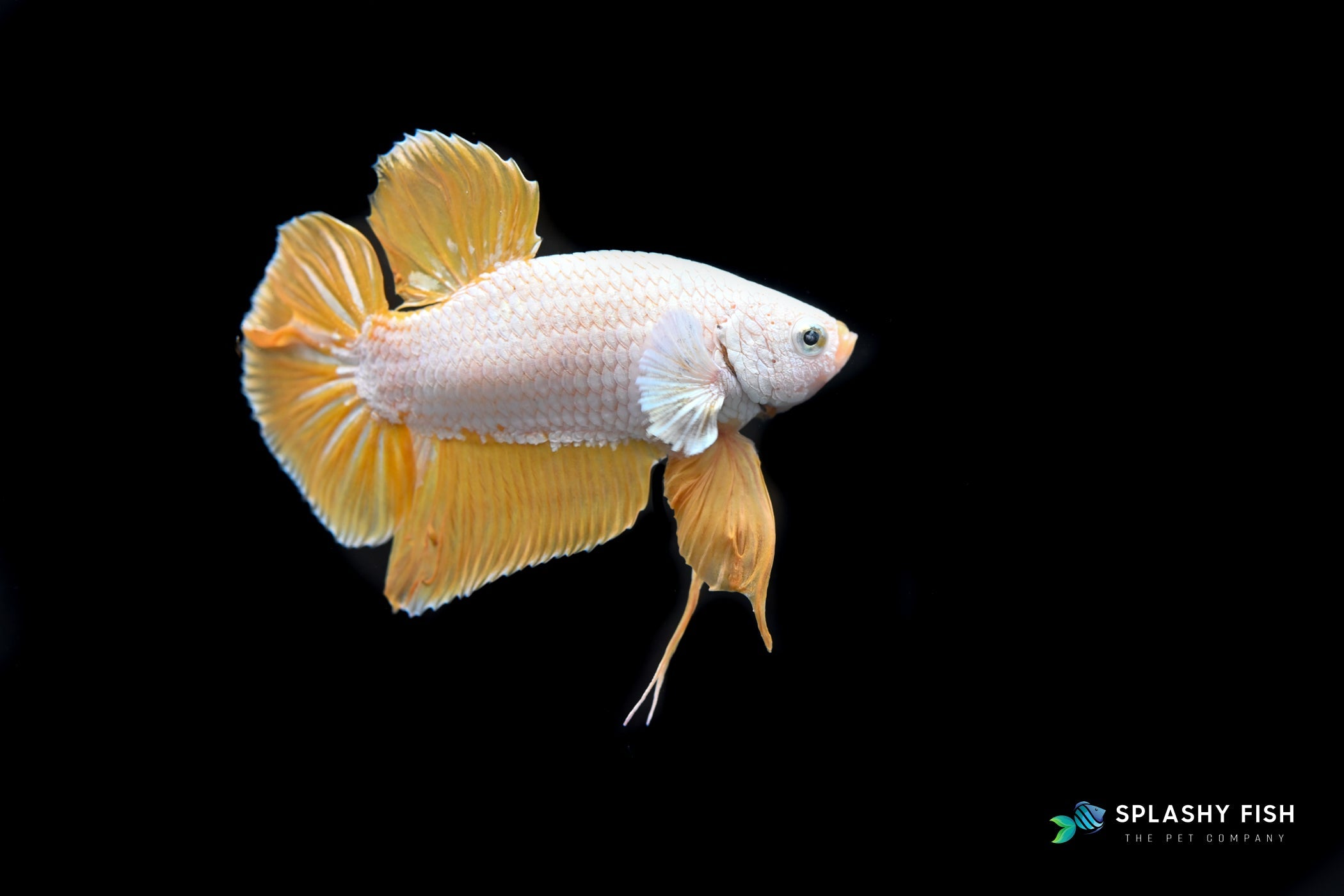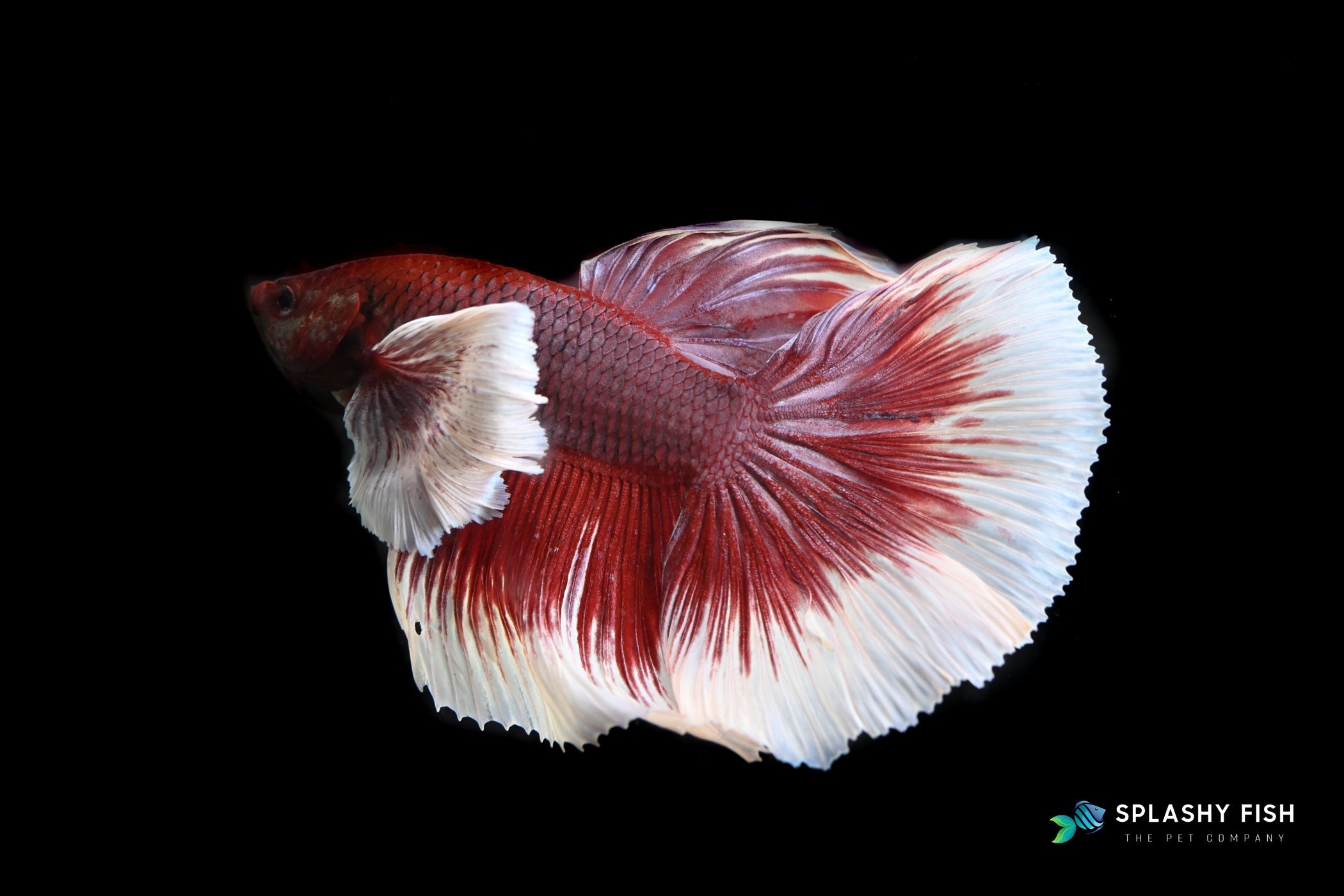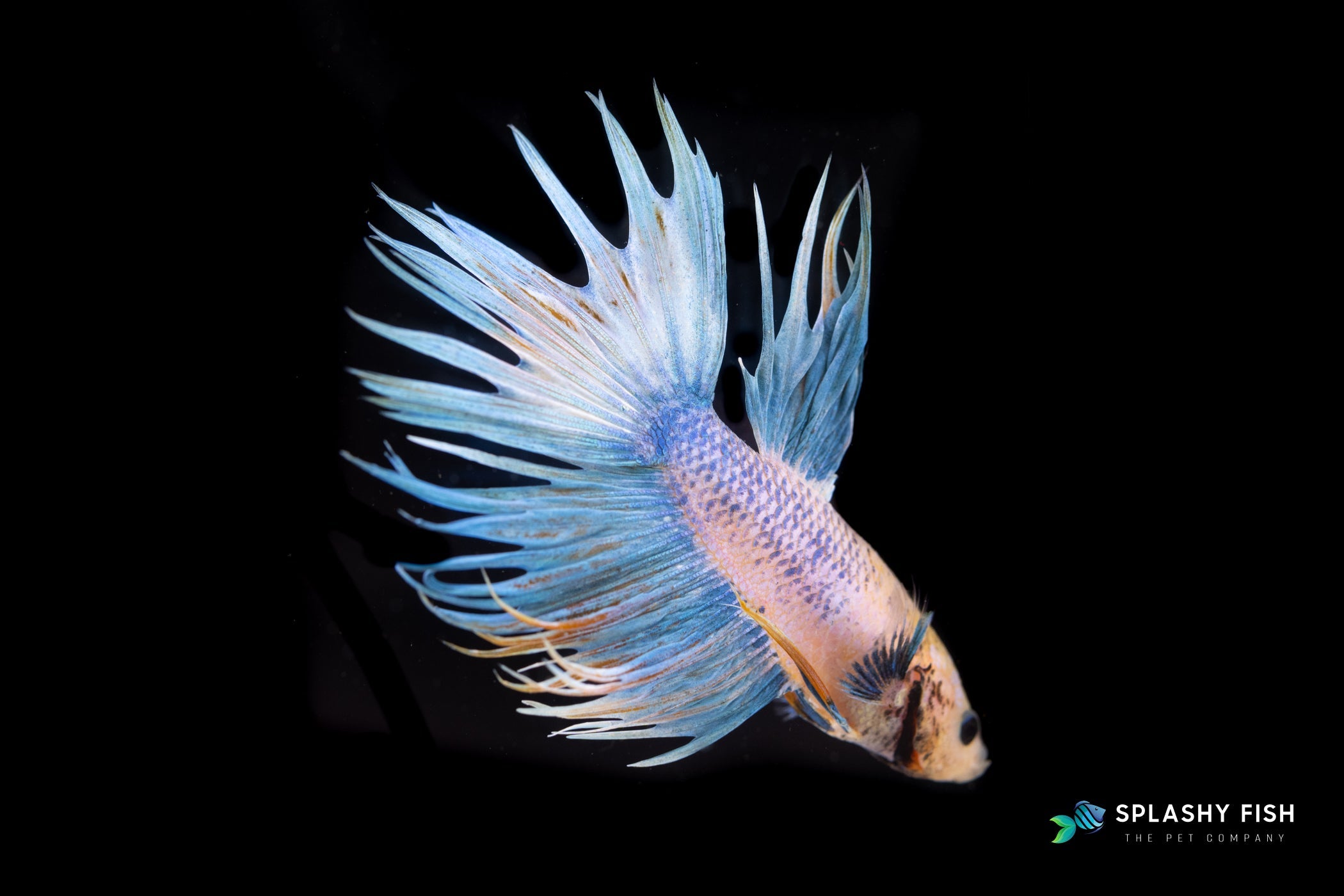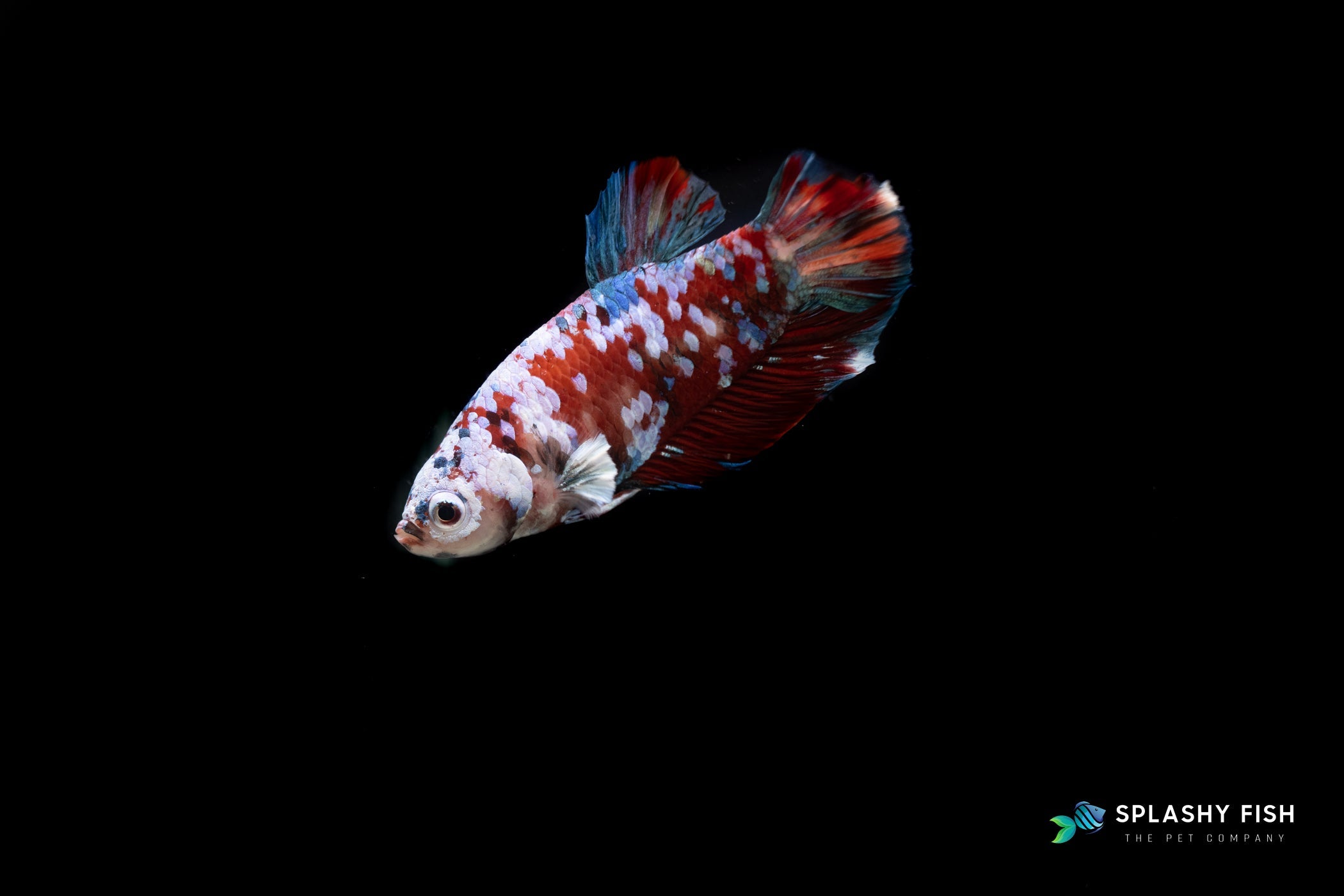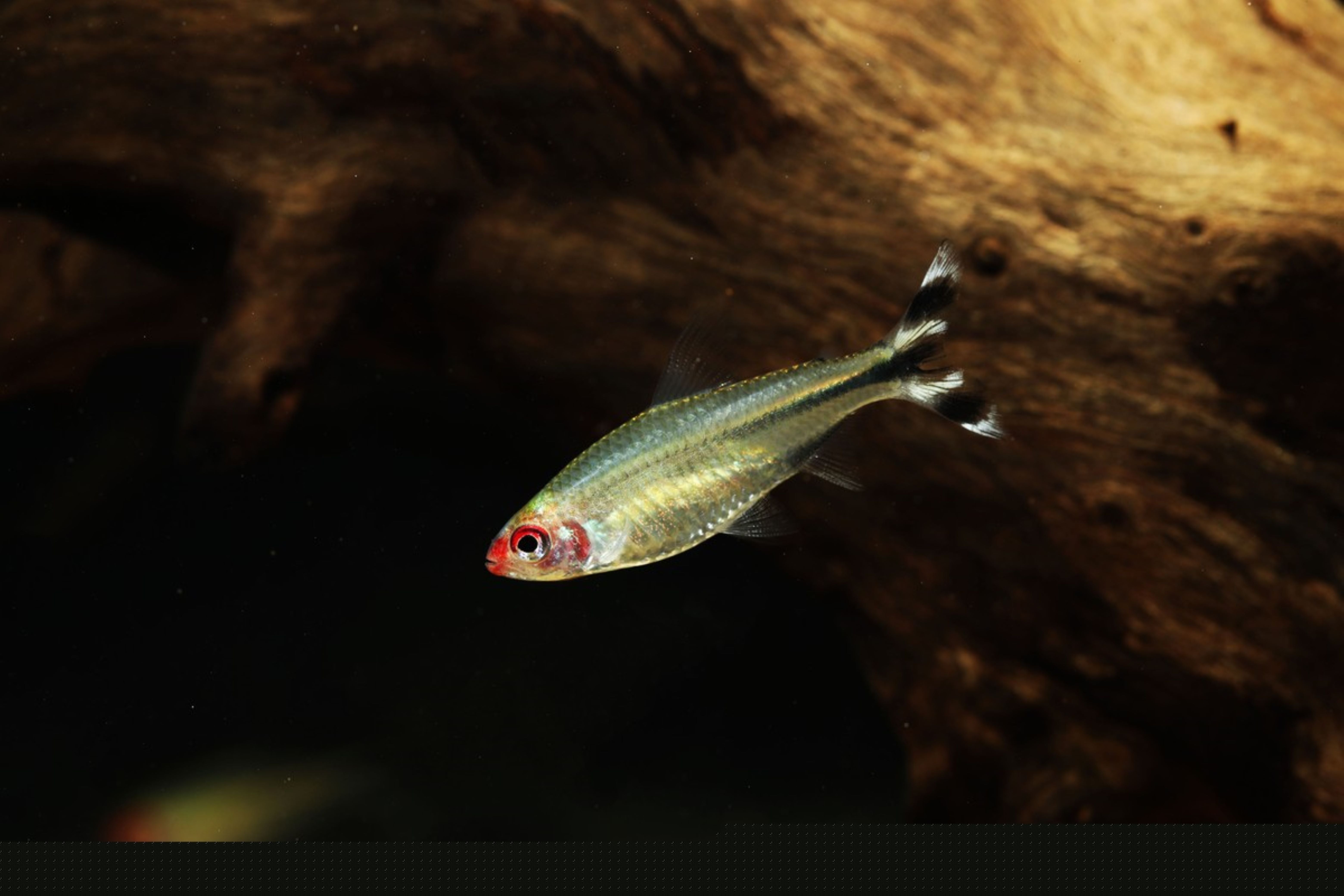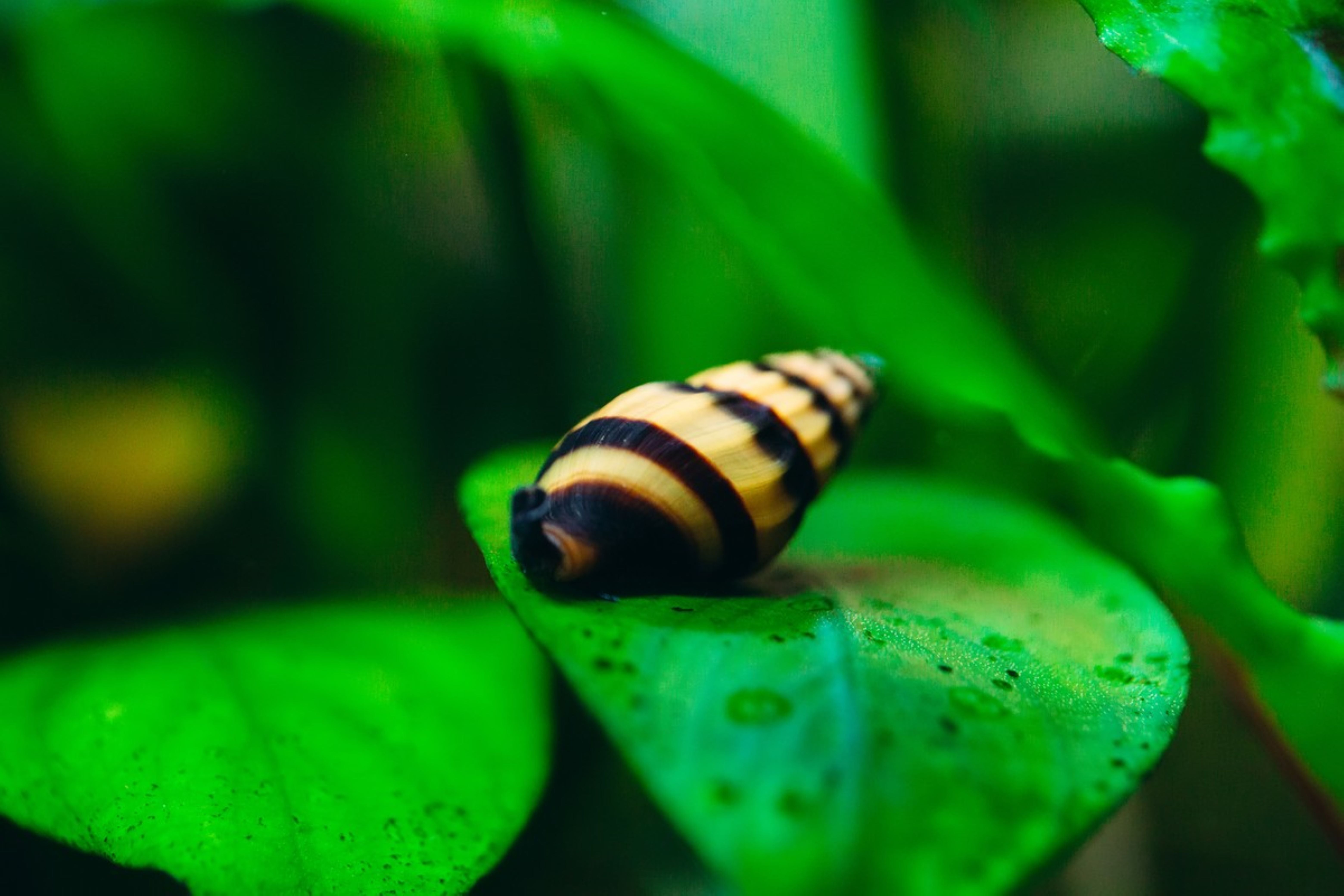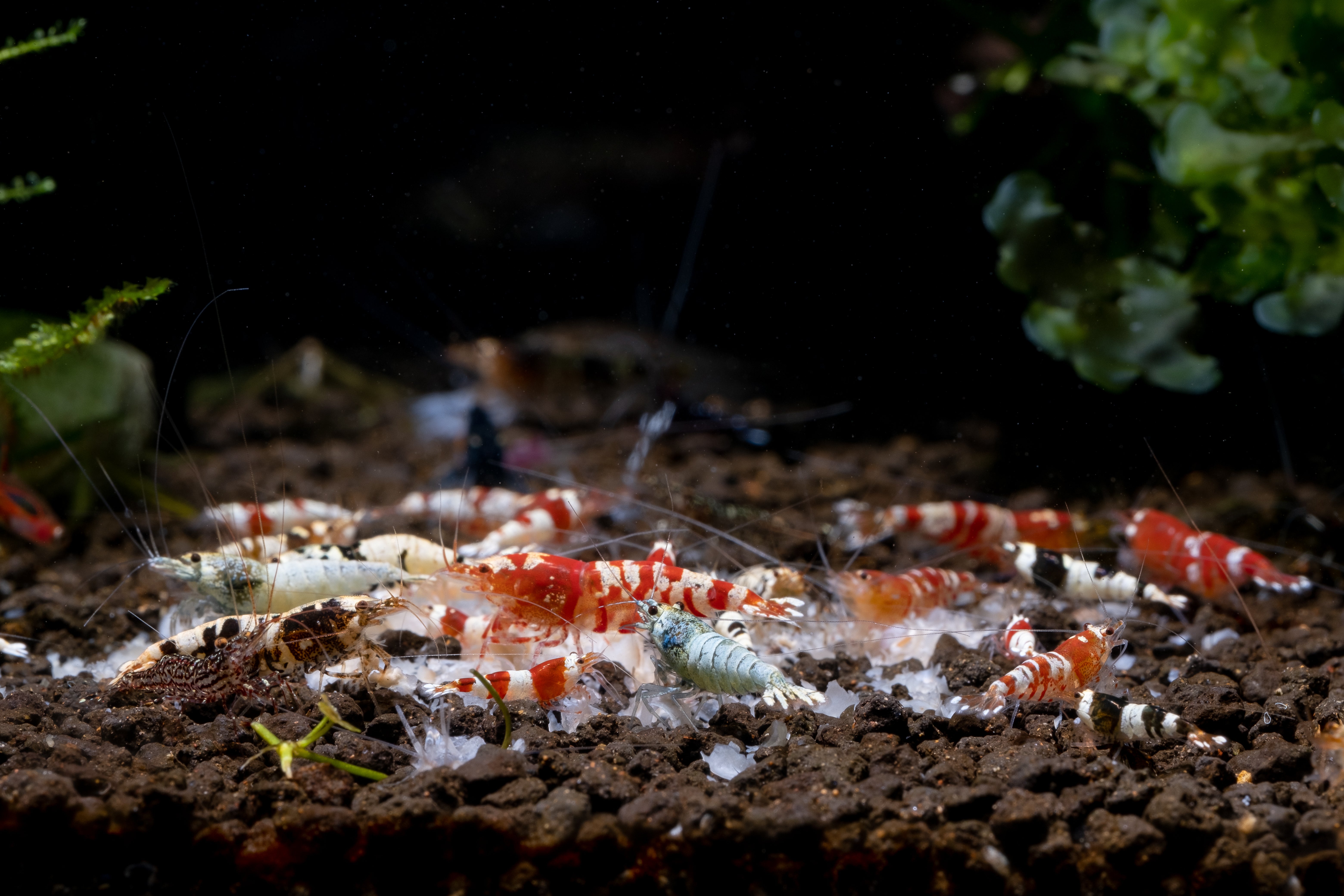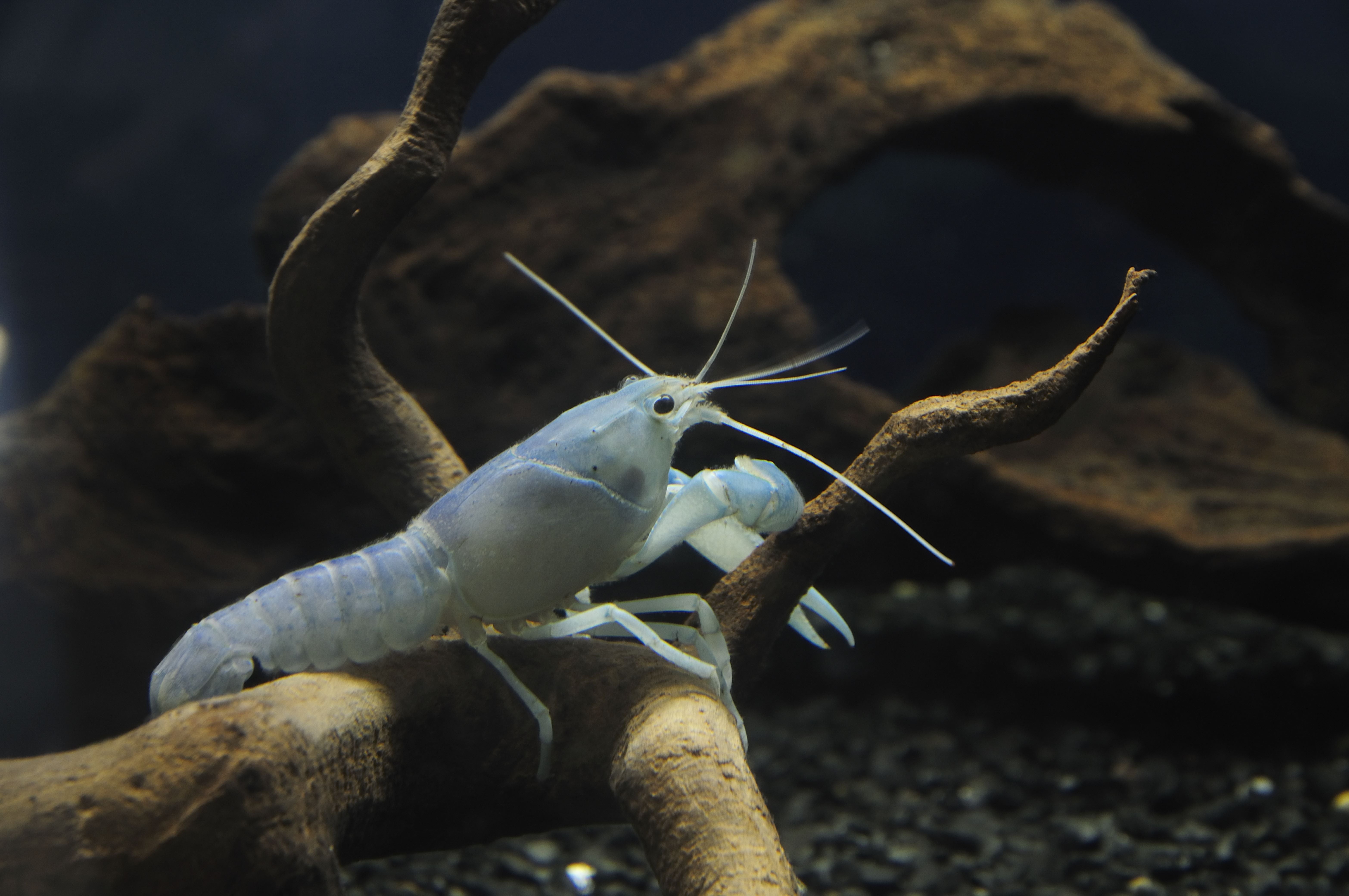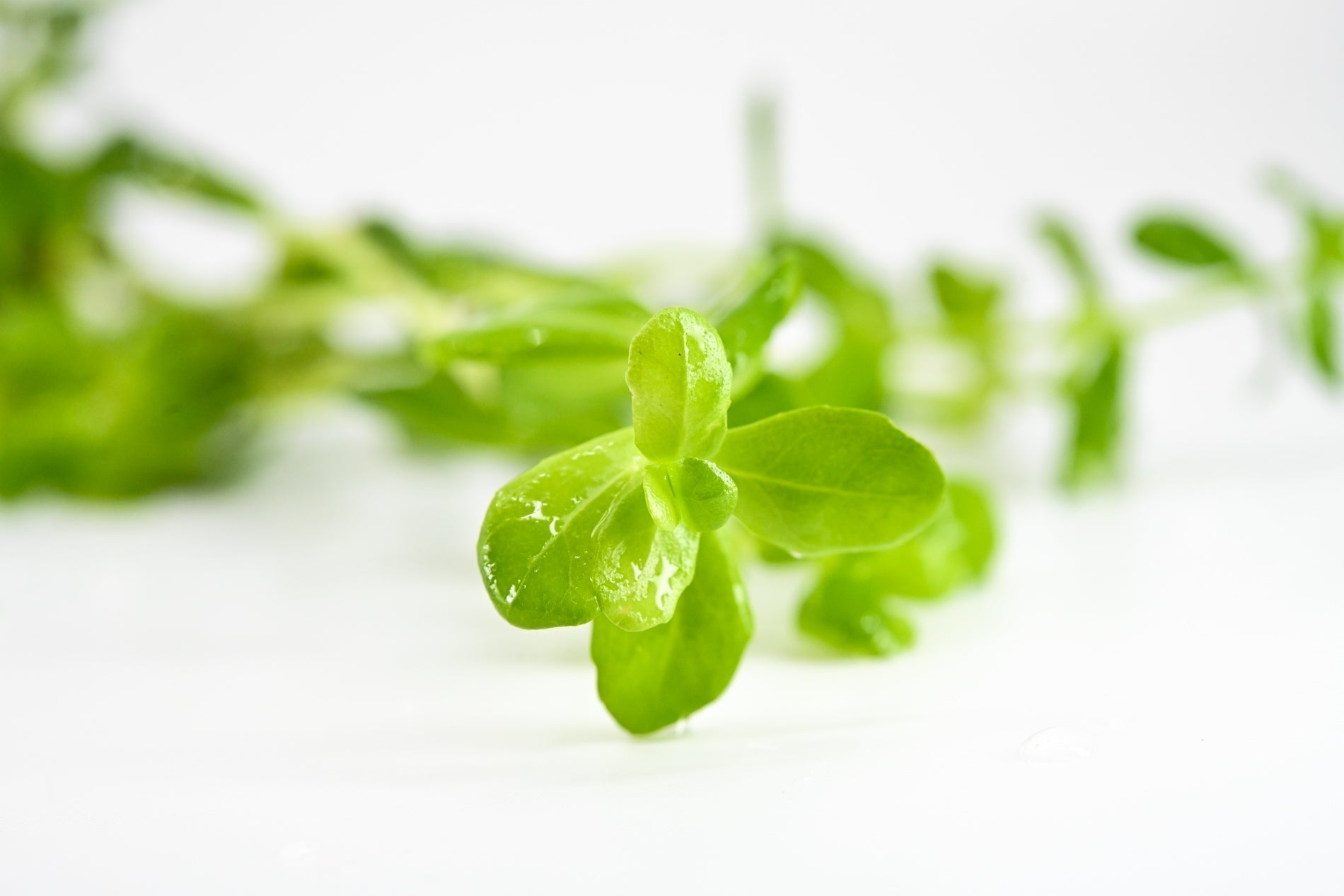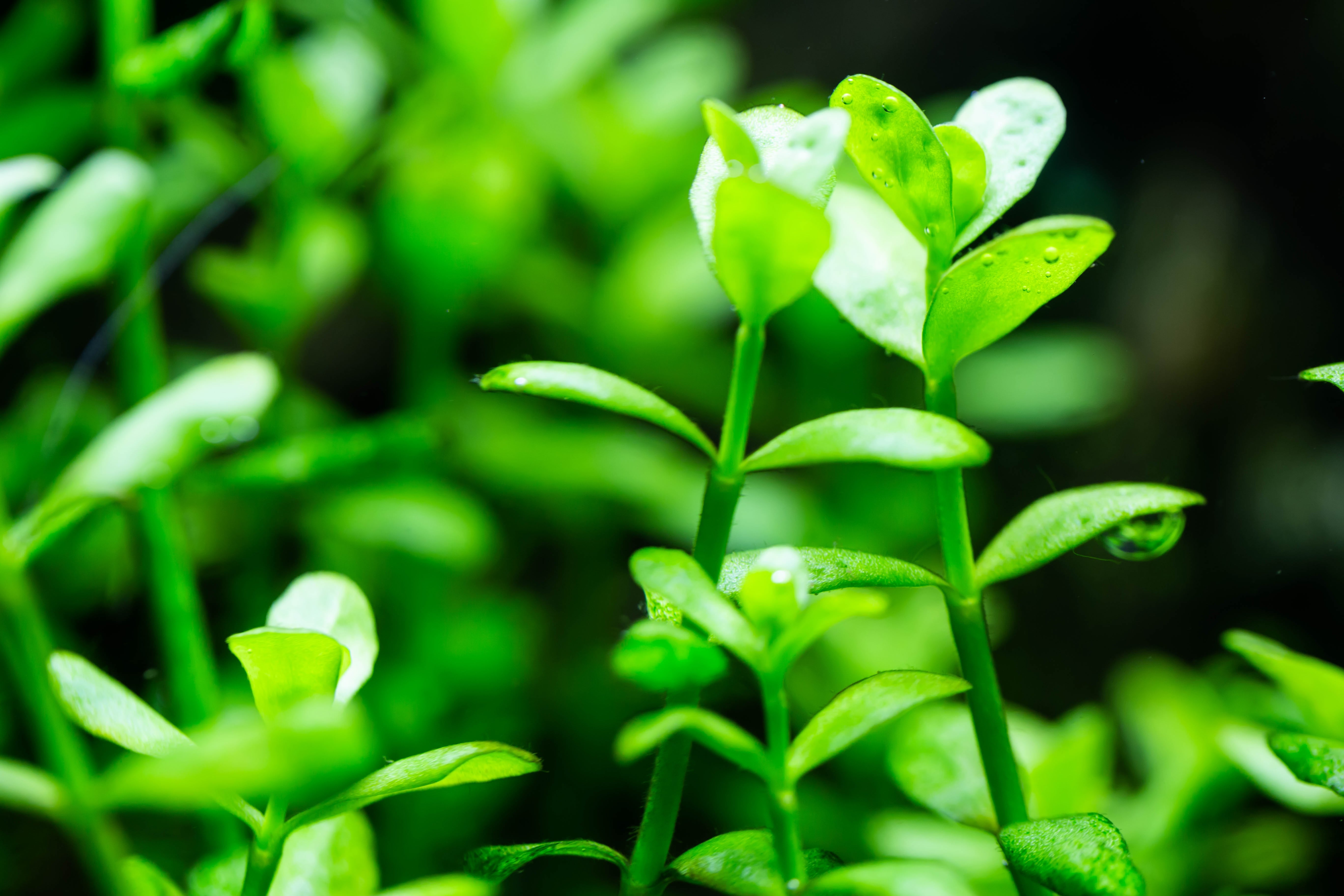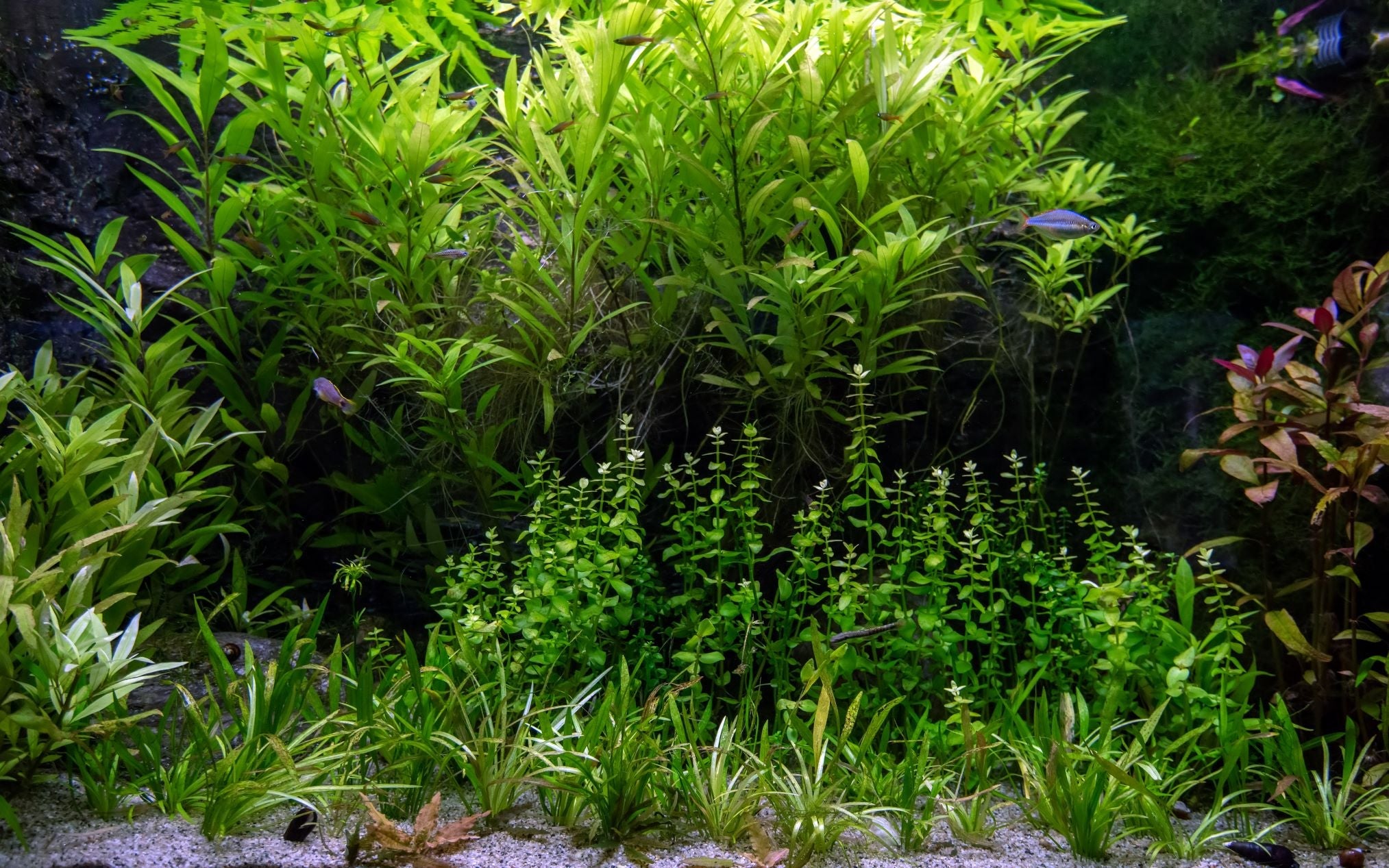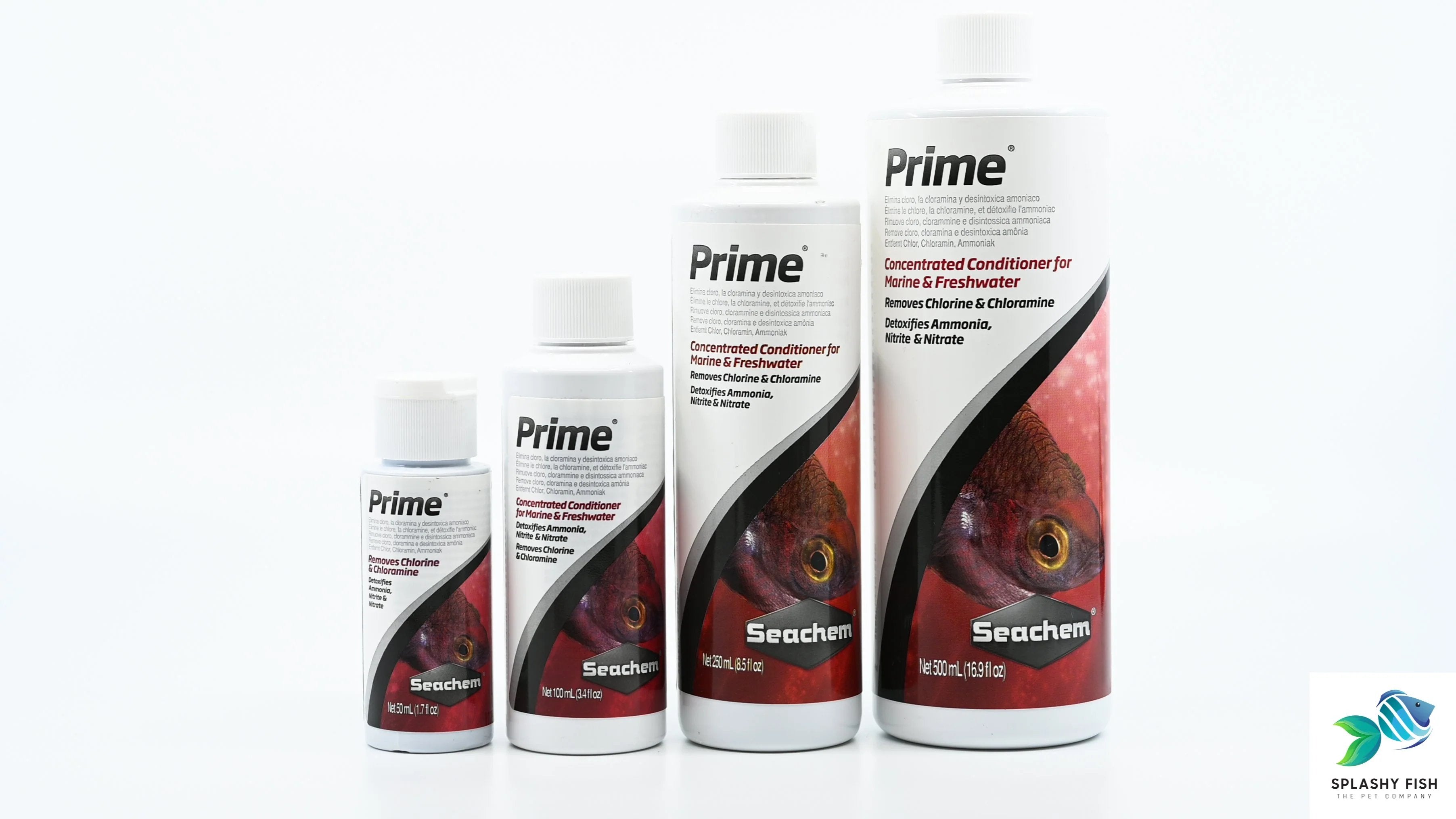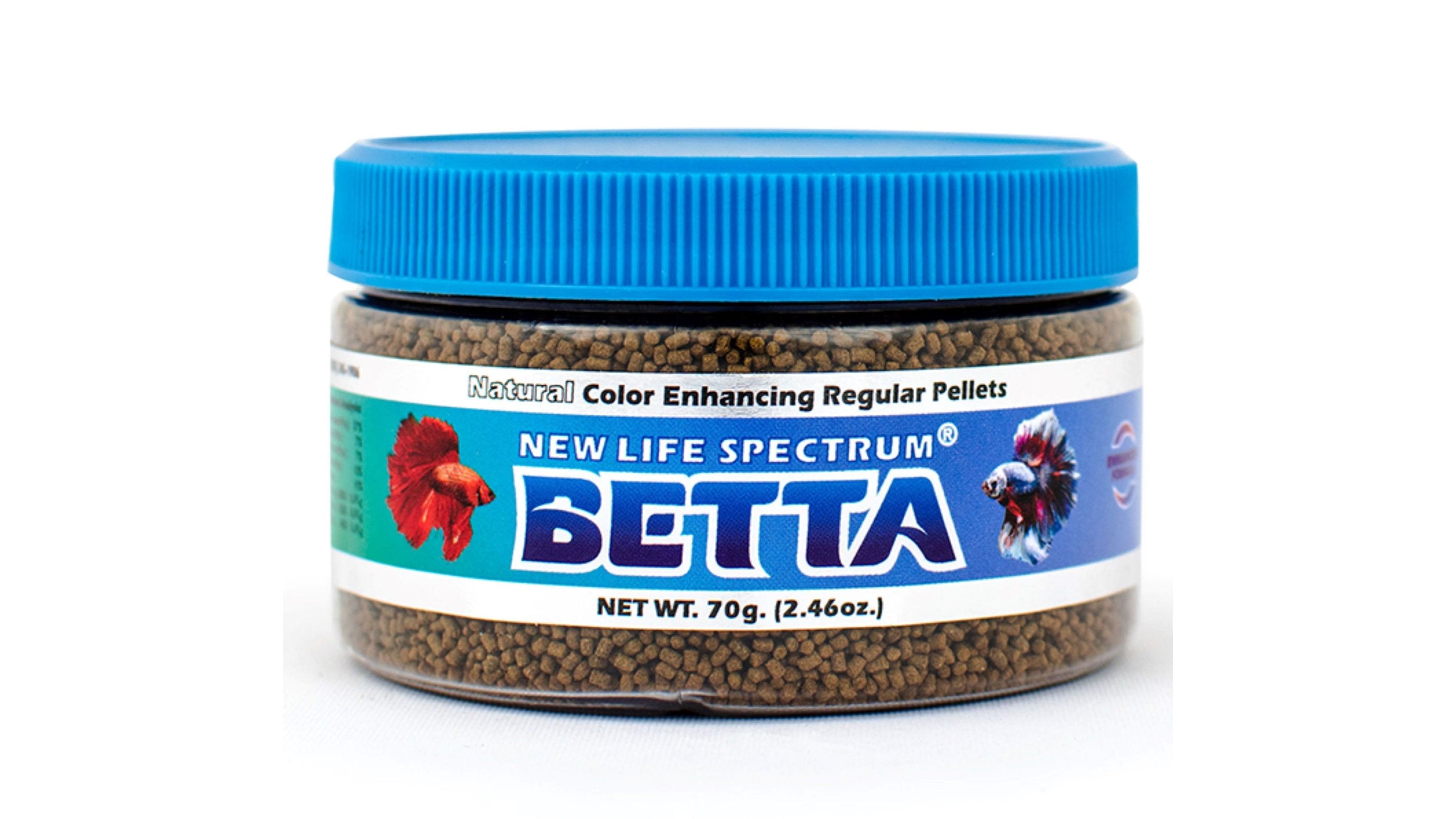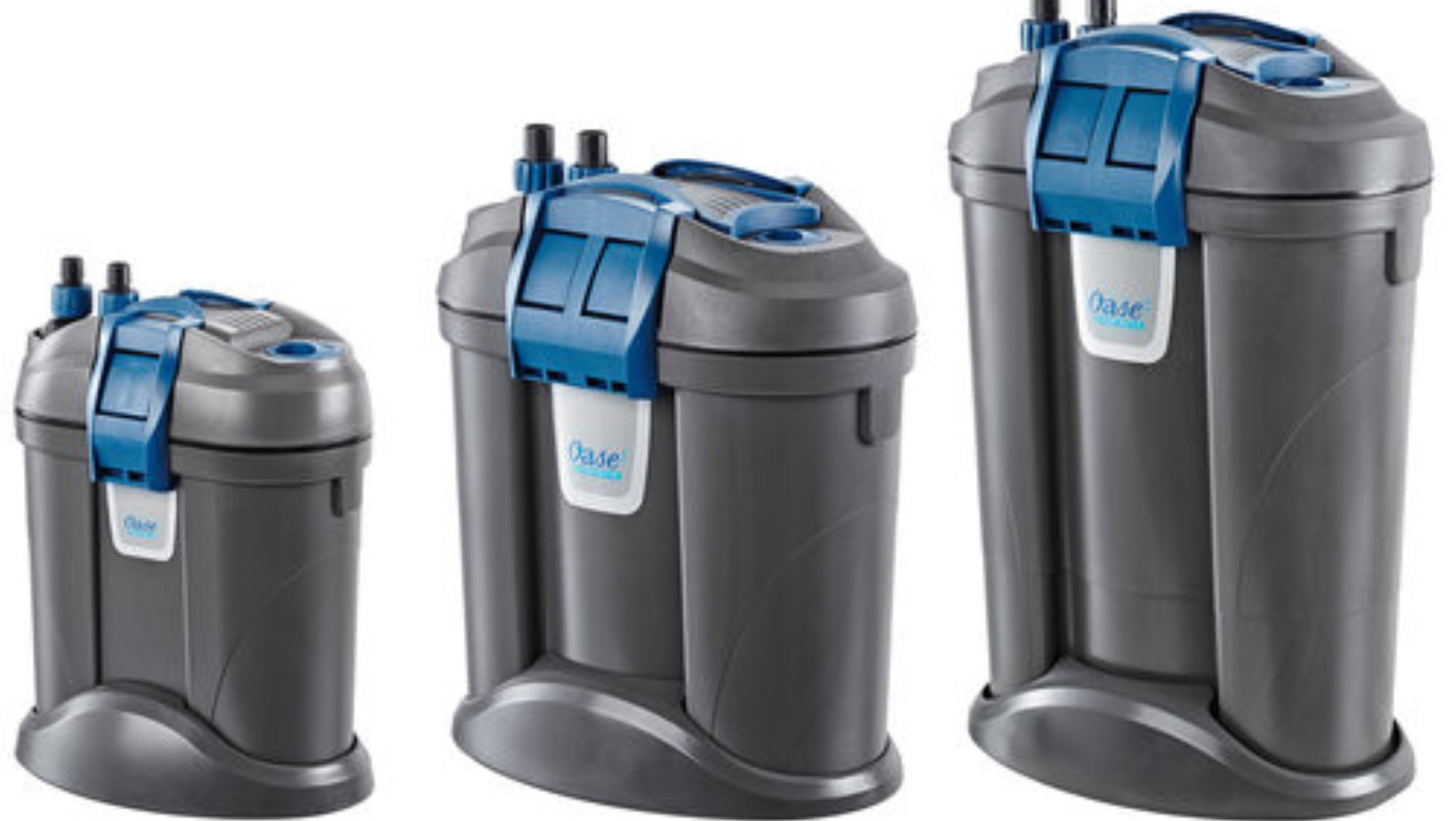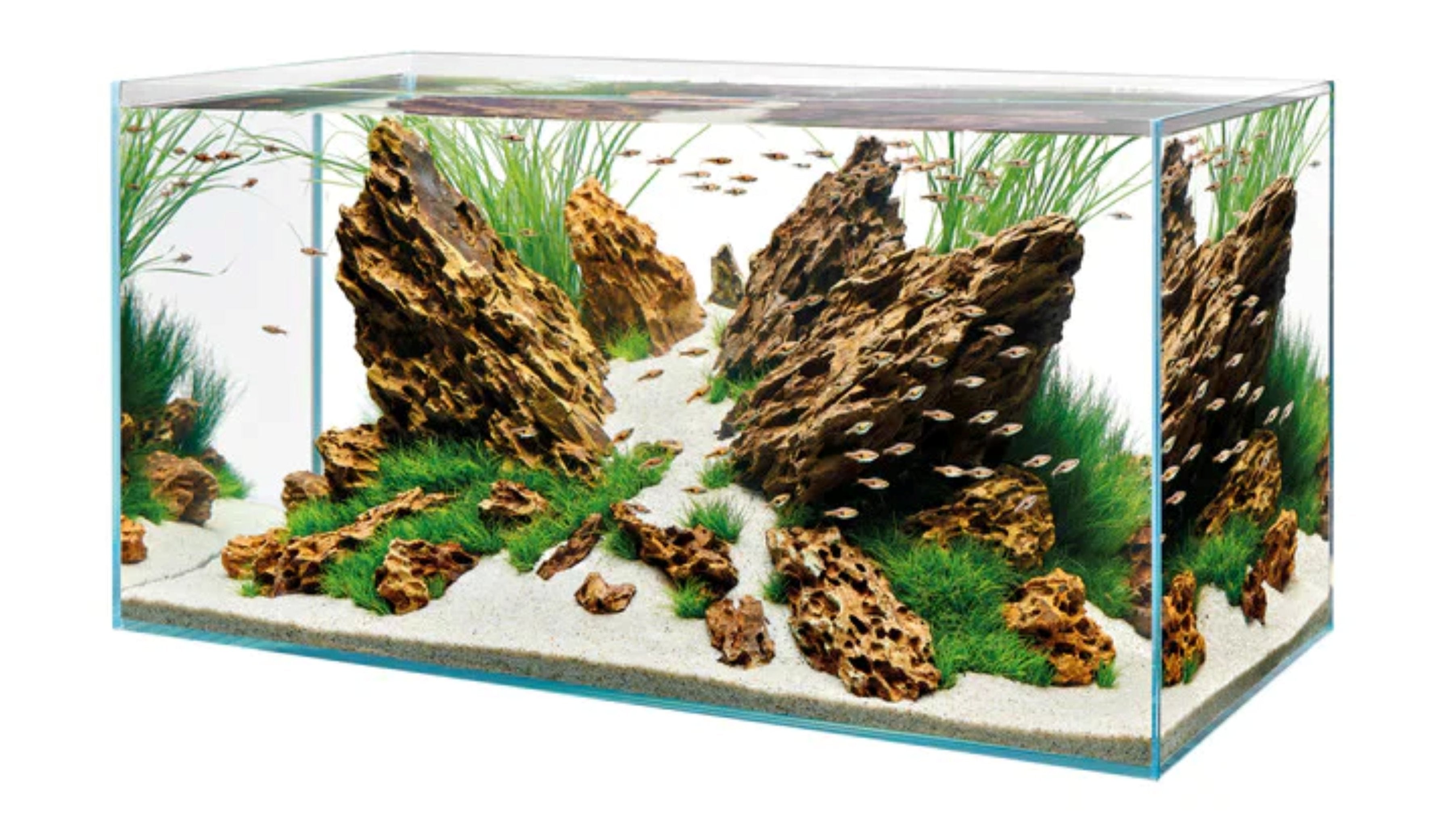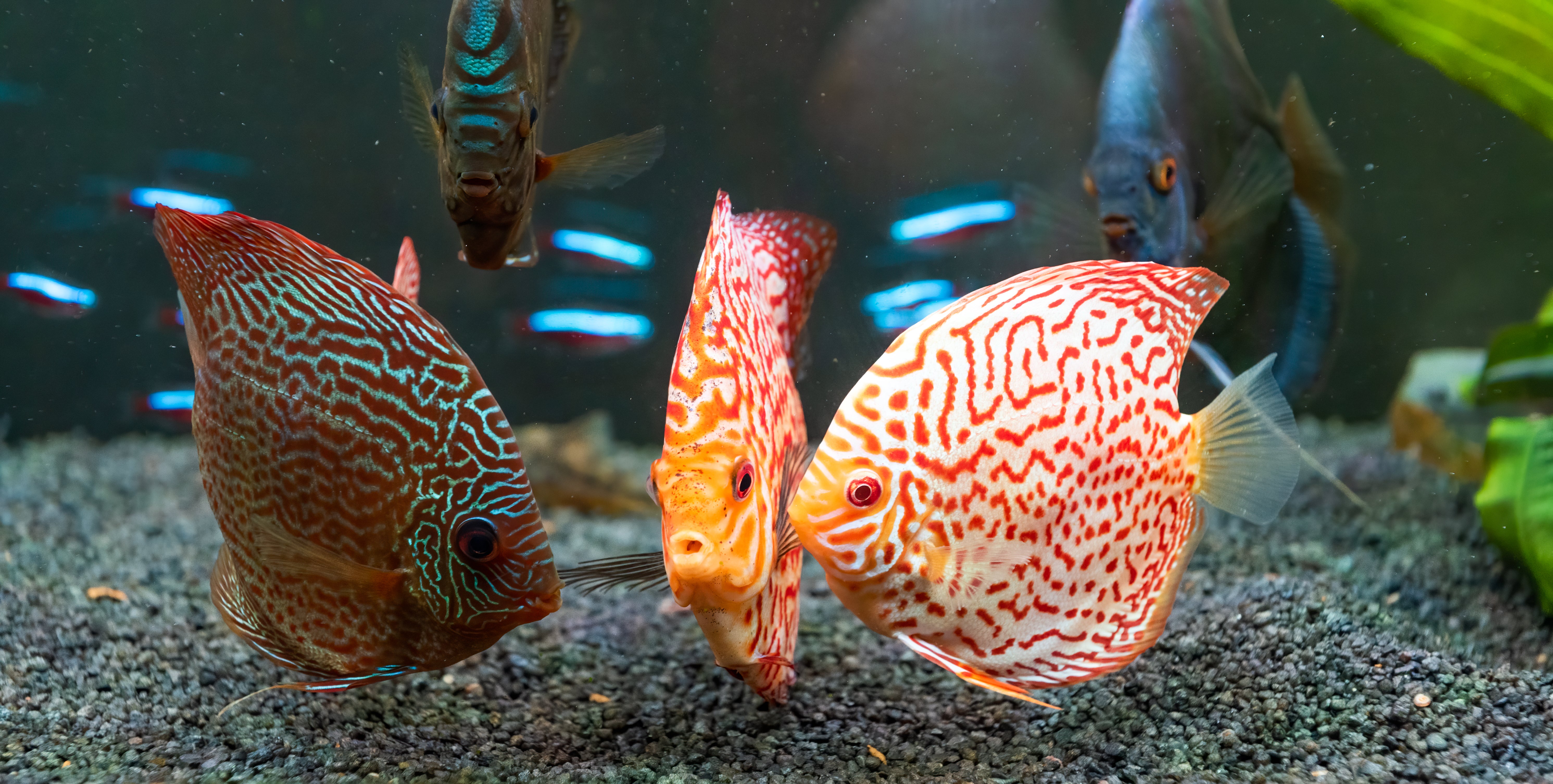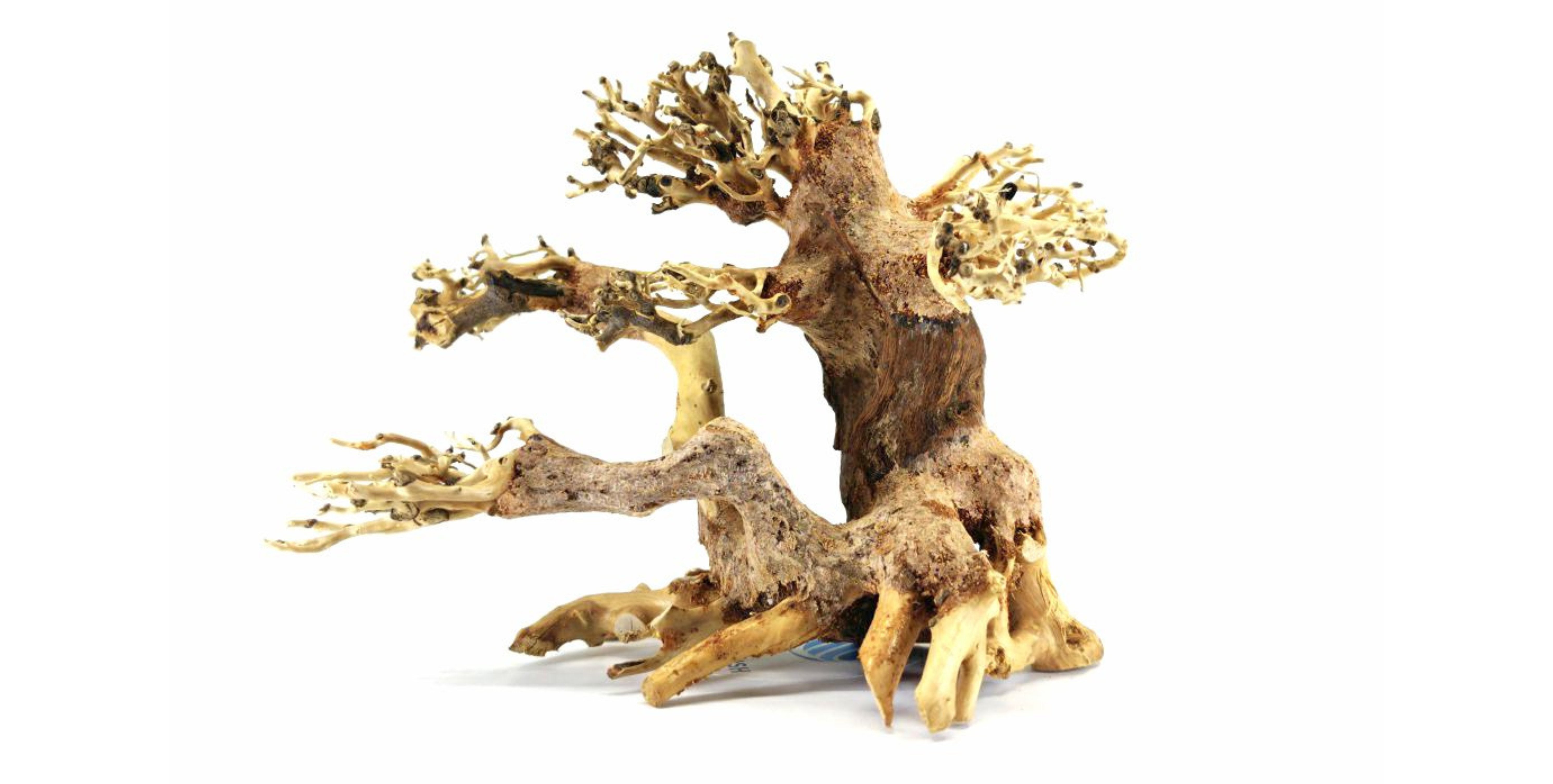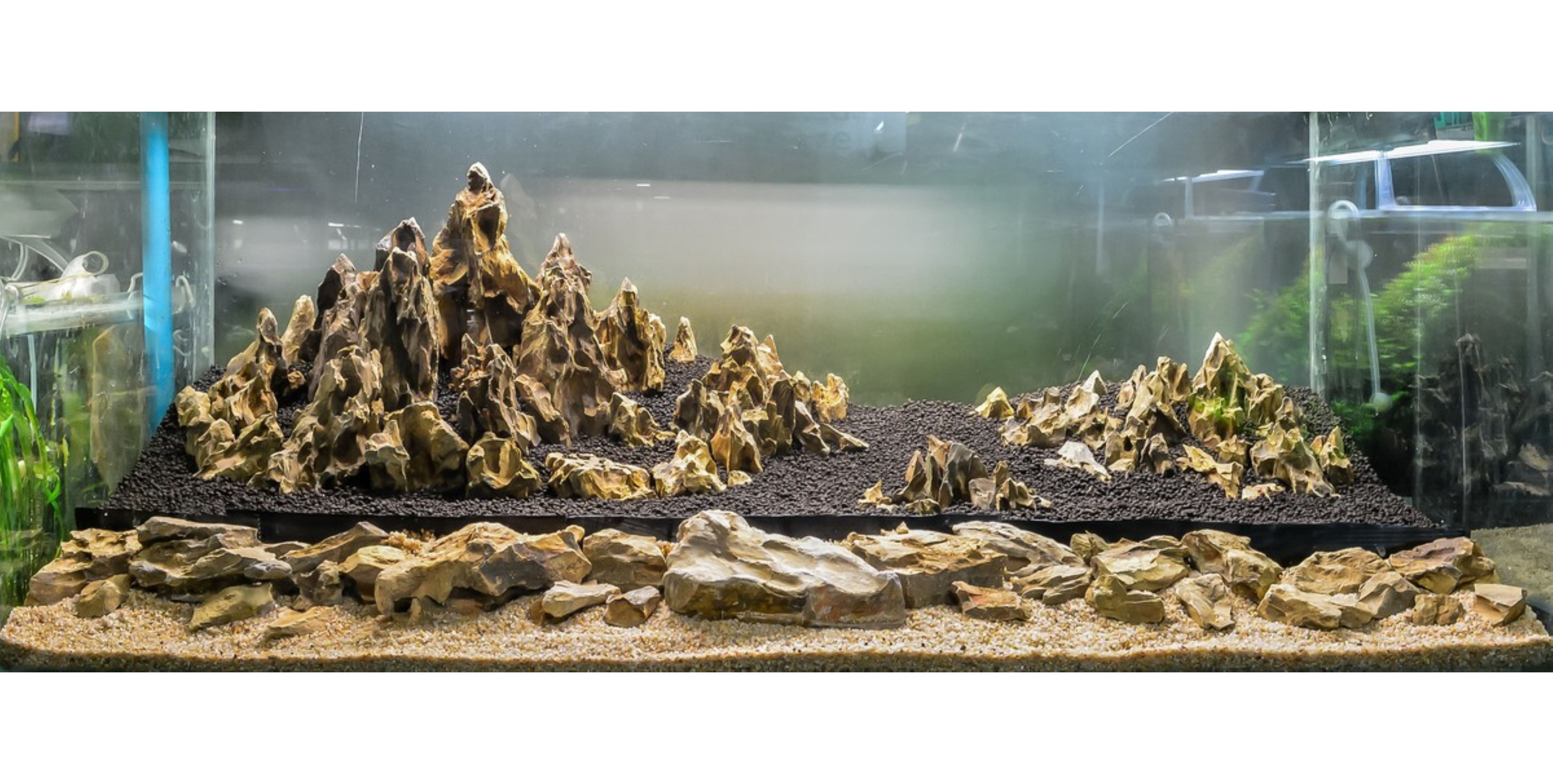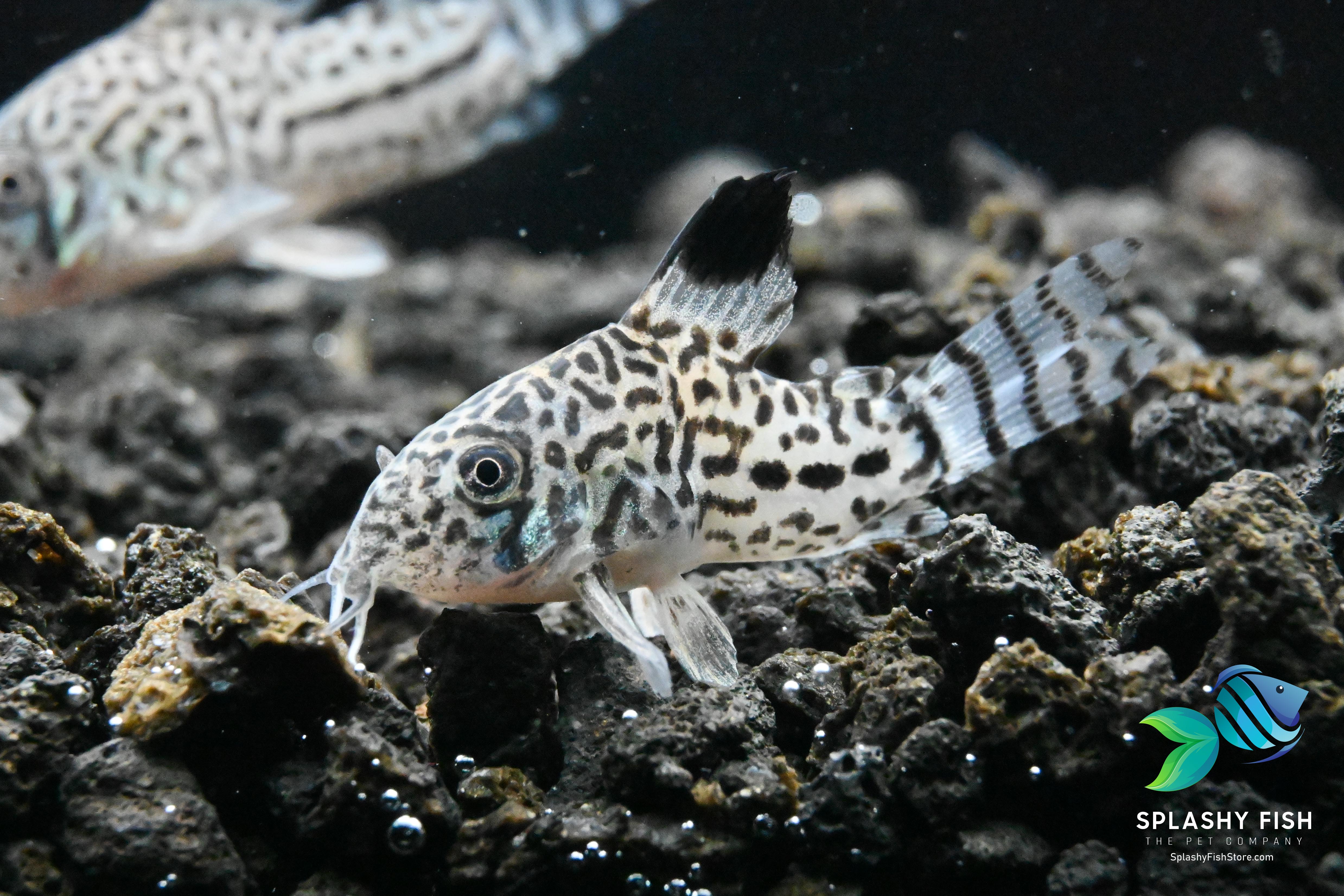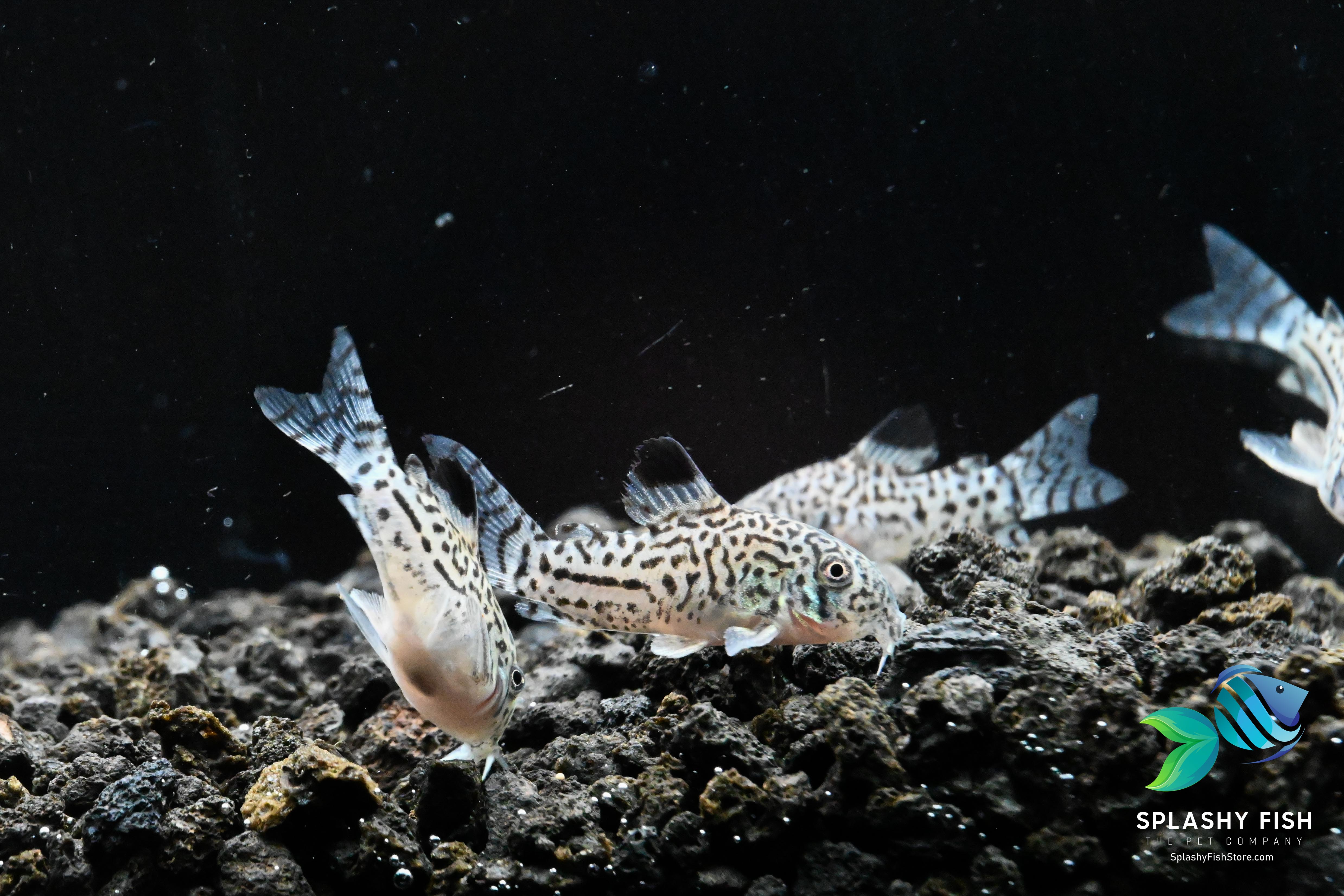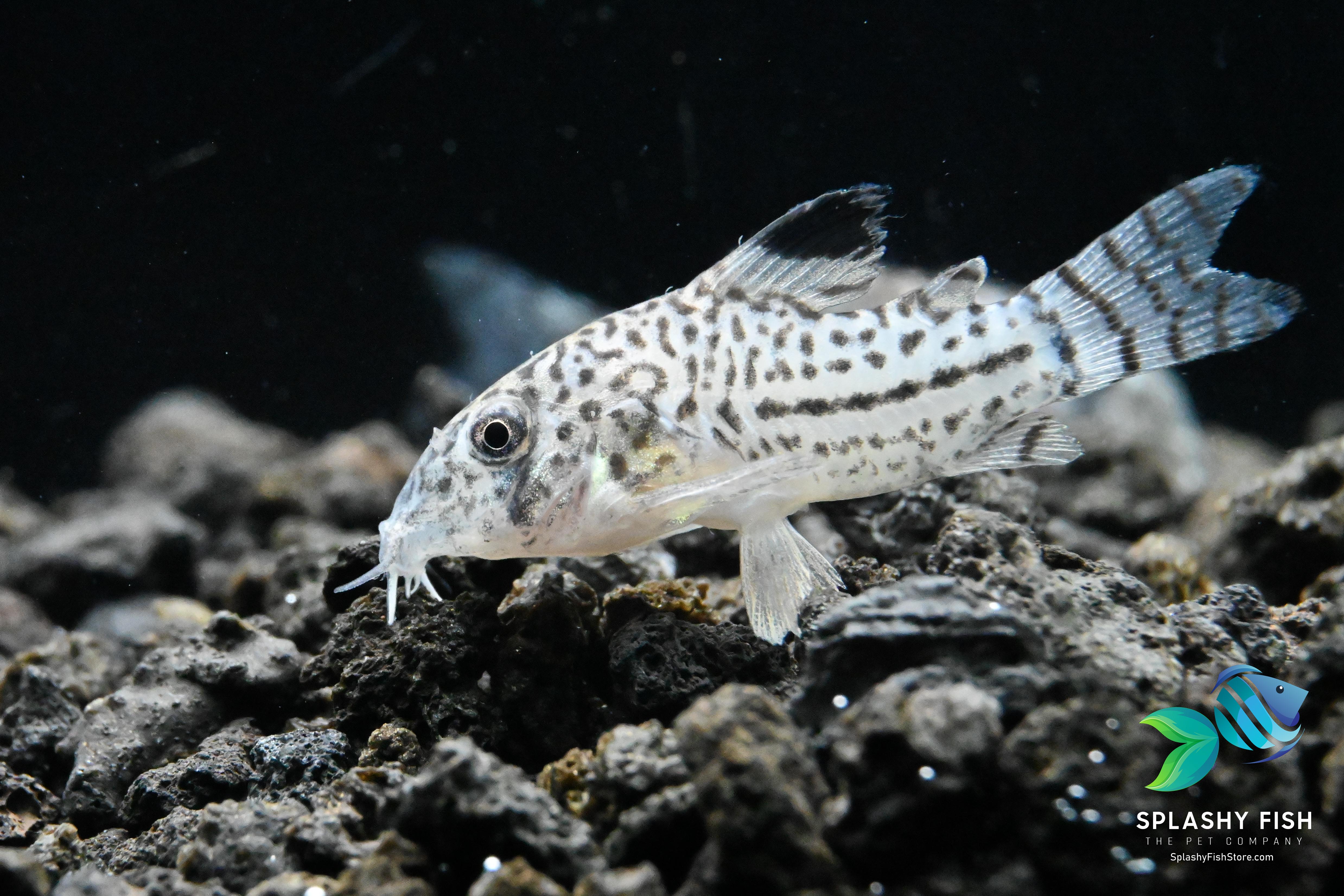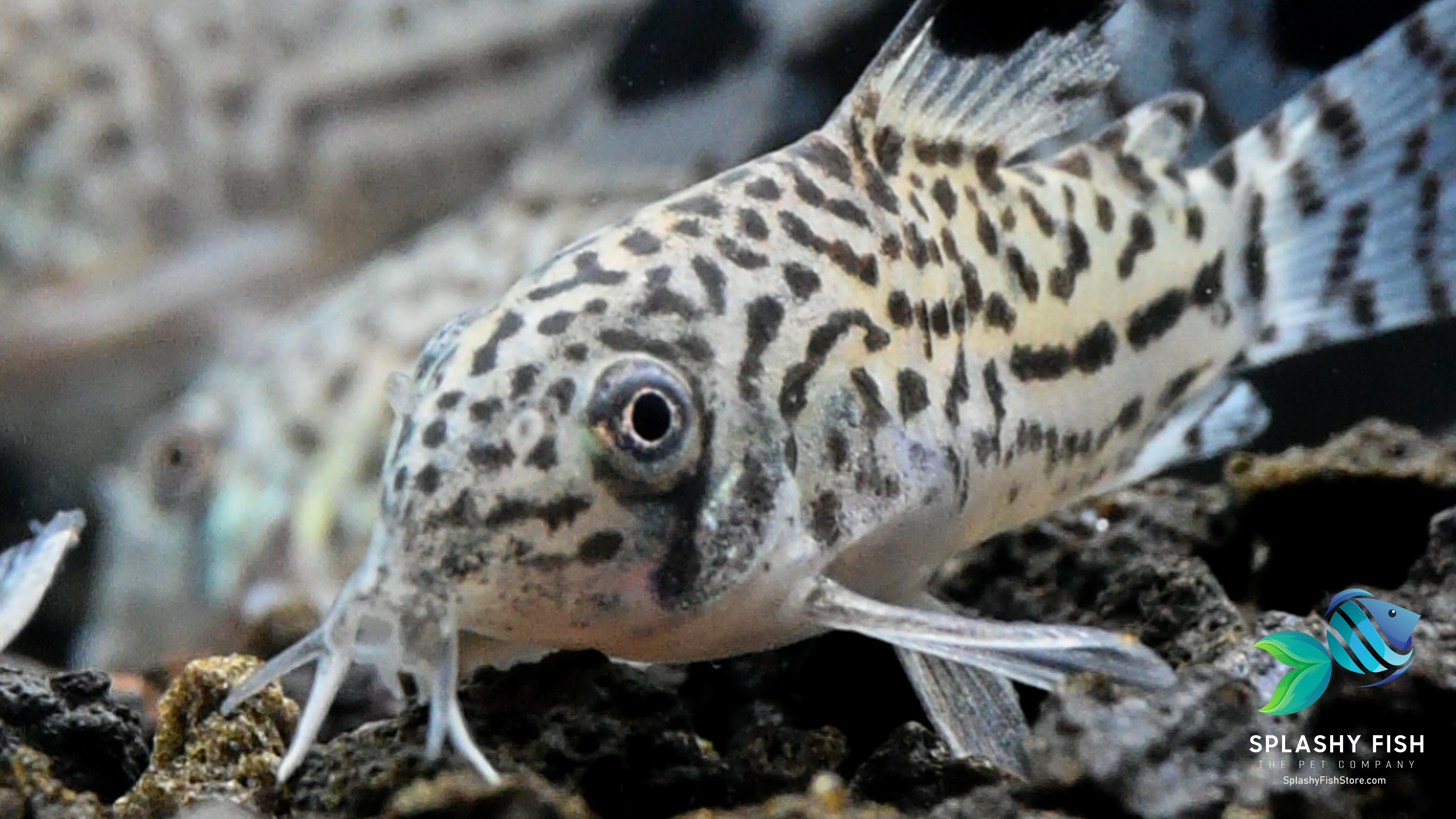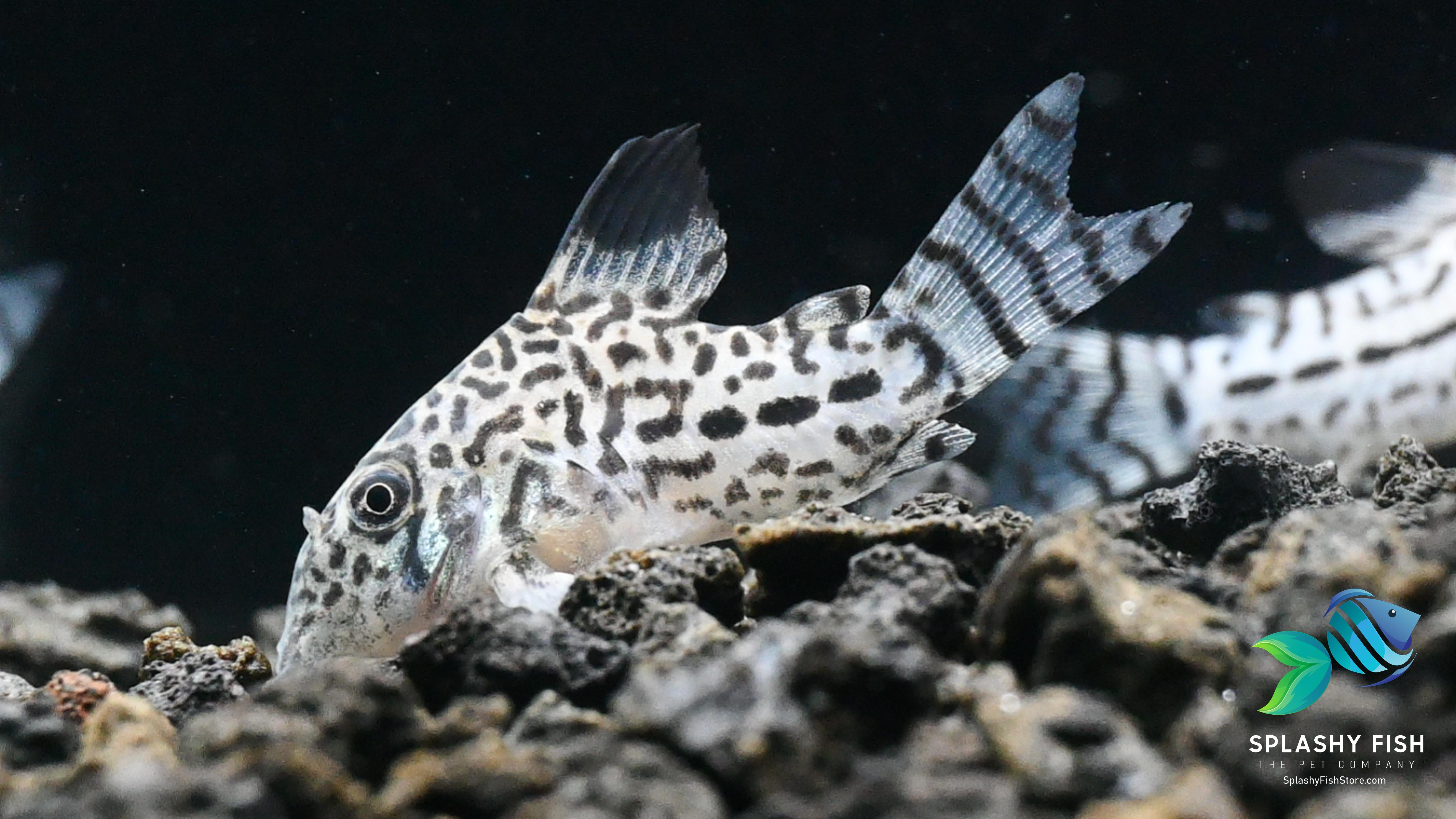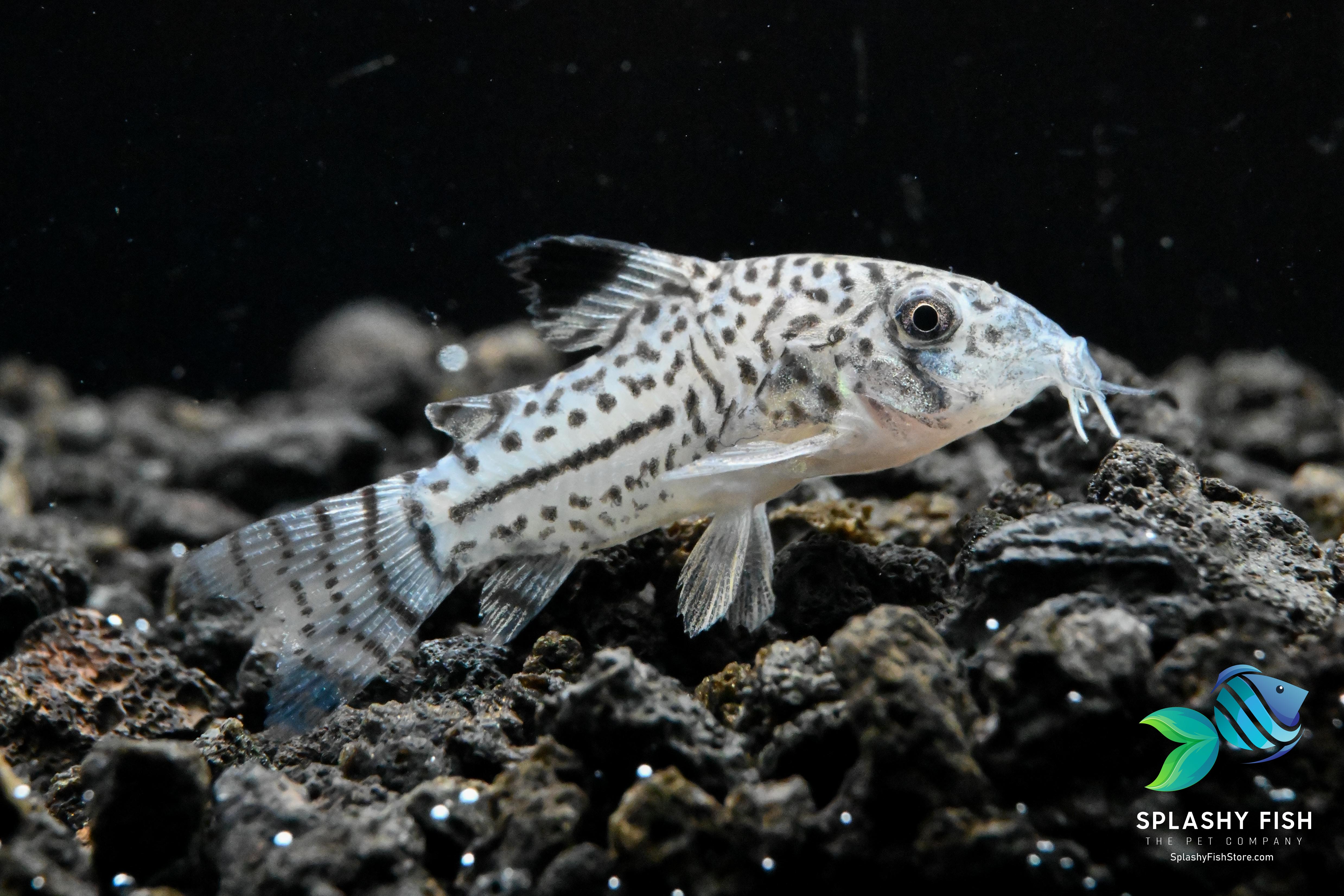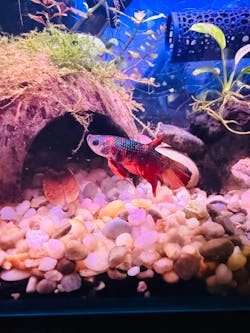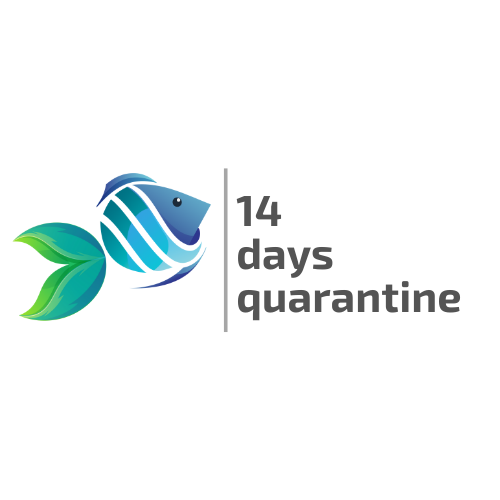Julii Corydoras Fish (Corydoras Julii)
- In stock, ready to ship
- Inventory on the way
- Live Arrival Guarantee
- All our live fish, shrimp, snails are care with love and passion, when through minimum of 14 days quarantined and shipped from Splashy Fish facility in Springfield, Virginia, USA

This is only apply to live fish order.
What is Our Live Arrival Guarantee?
Benefit from our extensive experience in shipping live fish. In 2021, our records indicated a mere 0.5% dead-on-arrival (DOA) rate for all live fish orders, compared to the industry standard of 1.5%. These numbers translate to only 5 out of 1000 orders experiencing DOA fish.
At Splashy Fish, customer satisfaction is our priority. That's why we provide a 100% Live Arrival Guarantee on all animals shipped via USPS, UPS, or FedEx. Please note - Splashy Fish reserves the right to void Live Arrival Guarantee protection under the following circumstances:
- The customer has chosen USPS First Class Mail as a shipping method.
- The shipping address is a PO Box address
- The order was refused delivery by the customer.
- If the order is returned to the sender for any reason. For instance, an incorrect shipping address, an undeliverable address, etc.
- The order was held for pick up at USPS, UPS, and FedEx offices for longer than 24 hours after the last update on the tracking number.
- The Live Arrival Guarantee claim does not include all the requirements mentioned below
- The Live Arrival Guarantee claim is made after the claim period mentioned below.
- The animals are not in their original packaging
Live Arrival Guarantee Claim Period:
For Live Fish and other invertebrates, one and a half hours (1.5 hours) after the posted delivery time.
For Snails: 48 hours after the posted delivery time.
Steps to claim Splashy Fish's Live Arrival Guarantee:
- Take a picture of the shipping box and the shipping label.
- For live fish and other invertebrates: Please provide two pictures of each bag (containing the dead fish) upon arrival. Ensure the images display the bag in its original, unopened condition with the original rubber band intact
- For Snails: Position the snail in one corner of the tank. If the snail does not move within 48 hours, please take several pictures of the snail's opening
- Send an email to DOA@splashyfishstore.com with the subject line: DOA and Your Order Number, or message us on social media.
- In the body of the email, include your tracking number.
- The claim must be sent within the claim period mentioned above.
After submitting the required information, please allow us 1-3 business days to determine the cause of the issue. If the claim is valid and approved by our team, you will
- Receive a store credit for future purchases, excluding the shipping cost, of the dead-on-arrival fish
If the Live Arrival Guarantee claim does not meet all listed requirements, Splashy Fish reserves the right to reject it.
Shipping live animals and plants is a complex process, and temperature plays a crucial role in ensuring the safe and secure delivery of your order.
If the highest daytime temperature in your location and the lowest nighttime temperature here in Springfield, Virginia—where our facility is situated—fall below 40°F or exceed 90°F, we will proactively delay your order. This measure is taken to prioritize the well-being of the animals and plants.
For the safety of our living cargo and to protect your investment, we retain the right to suspend shipping as necessary due to extreme weather conditions. Our Splashy Fish team will assess the situation and determine if it is unsuitable to ship, considering the safety of the animals.
To stay informed or address any questions or concerns, feel free to reach out to our dedicated Splashy Fish Support team via email at support@splashyfishstore.com.
Once our team prints and packs your order, we'll notify you via email. This notification will include your tracking number and the expected arrival day. If you opt for UPS 2 Day shipping, your package should arrive within 2 days after shipment. Similarly, if you choose UPS 1 Day, your order will reach you the day after it is shipped. In the case of orders containing only plants or dry goods, they may be shipped via USPS, provided that this is the selected shipping option during checkout.
We ship all of the customer orders from our warehouse located in Springfield, VA. We pack and ship our orders depending on the orders with the exception of someday we cannot ship out live fish.
All Orders: will be shipped out from Monday to Thursday each week for overnight shipping by UPS.
Sunday: (Splashy Day) Today is the day we let our hard-working team members and our fish to destress and ready for the following week's shipment.
For more information regarding about shipping please visit us our Shipping Policy and Schedule
Julii corys, also known as Leopard Corydoras, are cute bottom dwellers that will clean your tank with the sensitive barbels they use to root around for food at night. But any fish attempting to swallow this diminutive catfish will be in for a painful surprise of spikes and armor. This Corydoras species has the ability to rotate the eye, which gives it the appearance of winking. Hence, fishkeepers often find this fish quite entertaining and endearing.
Indigenous to the lower Amazon region, primarily the Parnaíba River of Brazil, Corydoras julii is found in flooded forest regions as well as in creeks and small tributaries. It is often confused with Corydoras trilineatus, a species that is found in the upper Amazon.
Many owners who think they have taken home the julii cory, Corydoras julii, have accidentally purchased Corydoras trilineatus. Julii corys are smaller and more stout in build, with a shorter head and rounded snout. They also have small, isolated spots, while Corydoras trilineatus has spots that tend to connect into a reticulated pattern; this is particularly noticeable on the head. This species reaches an adult size of a bit over 2 inches.
Like other cory species, the body is silvery gray. A dark zigzag stripe runs along the lateral line from the gills to the tail. Above and below this dark line is a section that is not spotted, beyond which are many small dark spots of varying size. On the body, some of these spots connect to form short lines, but on the head, the spots are distinctly separate, a feature that differentiates this species from similar corys.
At Splashy Fish tropical fish store, our Julii Cory Catfish for sale and other Corydoras for sale are tank-breed, grown, and sold with love and care. Visit our fish store online or aquarium Virginia for more high-quality freshwater fish for sale. We have a lot more fish available for sale such as betta fish for sale, aquatic plants for sale, Neocaridina shrimp for sale, Mystery snails for sale, Nerite snails for sale, and other aquarium supplies.
Julii Corydoras Frequently Ask Question (FAQS)
How Big Do Julii Corydoras Get?
The Corydoras julii, commonly known as Julii Cory, is a small freshwater fish species that typically grows to a maximum length of 52 millimeters (about 2 inches). These fish have a translucent whitish-gray body adorned with fine black spots and a distinctive horizontal stripe running along the mid-body. This stripe extends up to the front base of their dorsal fin, making them easy to recognize in freshwater aquariums.
How Many Julii Cory Catfish Should Be Kept Together?
Julii Cory catfish are social fish that thrive in groups. To ensure they feel safe and happy, it’s best to keep at least six Cory catfish together in your aquarium. Corys are naturally shoaling fish, meaning they prefer the company of their own kind. Keeping them in groups of six or more encourages natural behavior, reduces stress, and makes your aquarium environment more lively and balanced.
Are Julii Cory Catfish Aggressive?
No, Julii Cory catfish are not aggressive. They are peaceful bottom-dwelling fish that make excellent additions to community aquariums. Julii Corys coexist well with most other non-aggressive fish species that won't eat or harass them. Their calm and gentle nature makes them ideal tank mates for tetras, guppies, rasboras, and other small, peaceful fish.
The Ultimate Guide to Julii Cory Catfish Care: Tips for a Happy and Healthy Aquarium
Julii Cory catfish, or Corydoras julii, are a beloved species among aquarists due to their striking spotted patterns, gentle nature, and active personalities. These bottom-dwellers are not only visually appealing but also contribute to maintaining a clean and balanced aquarium tank. Whether you're a novice or experienced aquarist, this guide will provide everything you need to know to care for Julii Cory catfish, ensuring their health and happiness in your aquarium.
What Are Julii Cory Catfish?
Julii Cory catfish are small, freshwater fish native to the slow-moving rivers and streams of South America. They are easily recognizable by their intricate spotted patterns and rounded snouts. Known for their peaceful demeanor and social behavior, Julii Corys thrive in groups and enjoy foraging along the tank bottom. Adding them to your aquarium enhances its aesthetics and helps maintain a clean substrate as they scavenge for food.
Setting Up the Perfect Tank for Julii Cory Catfish
Creating the perfect environment for Julii Cory catfish (Corydoras julii) is essential for their health, comfort, and natural behaviors. This detailed guide provides tips on tank setup, water parameters, aquarium substrate, natural decorations, and more to ensure your Julii Corys thrive.
1. Tank Size
Size Recommendations: While Julii Corys are small fish, growing up to 2-2.5 inches in length, they are highly social and thrive in groups of at least five. A 15-gallon fish tank is the minimum recommended size for a small group. However, larger tanks, such as 20-30 gallons, provide more swimming space, encourage group interactions, and reduce stress.
Group Behavior: Keeping them in larger groups not only enhances their natural behaviors but also prevents loneliness and stress, which can affect their health.
2. Water Parameters
Maintaining stable water conditions is crucial for Julii Corys' well-being. Here are the ideal parameters:
-
pH Levels: Soft, slightly acidic water with a pH range of 6.0-7.5 is ideal.
-
Water Hardness: Aim for a range between 2-12 dGH.
-
Temperature: Keep the water temperature between 72-78°F (22-26°C). Use an adjustable aquarium heater for consistency.
-
Water Conditioner: Always use a water conditioner to neutralize harmful chemicals like chlorine and chloramines before adding water to the aquarium tank. This ensures a safe environment for your pet fish.
Tip: Regular water changes (20-30% weekly) are essential to keep water quality high and prevent ammonia or nitrate buildup.
3. Aquarium Filtration
-
Gentle Flow: Julii Corys prefer calm water and are sensitive to strong currents. Use a low-flow hang-on-back filter or a sponge filter to maintain water clarity without stressing the fish.
-
Oxygenation: A good aquarium filter also helps oxygenate the water, creating a healthy environment for both freshwater fish and live plants.
Note: Avoid filters with strong outputs, as the current can disrupt the fish's natural foraging behavior and cause unnecessary stress.
4. Aquarium Substrate
-
Soft Substrate: Use soft sand substrate to protect the delicate barbels (whiskers) of Julii Corys. These barbels are crucial for their foraging behavior and can be easily damaged by rough surfaces.
-
Avoid Aquarium Gravel: Sharp gravel or rough stones can cause barbel erosion, leading to infections and health issues.
Bonus Tip: Sand substrates also complement a live plant tank, as many aquatic plants root easily in aquarium sand.
5. Live Plants and Decorations
Creating a natural and enriching habitat with live aquarium plants and decorations is key to reducing stress and encouraging natural behaviors:
-
Live Aquarium Plants: Incorporate low-maintenance plants such as Java moss, Anubias, Amazon swords, and Cryptocoryne. These plants thrive in low-light tanks and mimic the natural habitat of Julii Corys.
-
Hiding Spots: Aquatic plants provide shelter and hiding places, reducing stress levels for your freshwater fish.
-
Natural Decorations: Add driftwood, smooth aquarium stones, and caves to enhance the aesthetic appeal and offer more hiding spots.
-
Benefits of Plants in an Aquarium: Live plants improve water quality by absorbing nitrates and providing oxygen, creating a healthier ecosystem for your Julii Corys.
Pro Tip: Secure your live plants in the aquarium substrate to prevent them from floating. This also helps create a stable and visually pleasing aquascape.
6. Aquarium Lighting
-
Low Light Setup: Julii Corys prefer subdued lighting, as bright lights can stress them. Use an adjustable LED light designed for aquariums to provide moderate illumination.
-
LED Aquarium Lights: These lights are energy-efficient, long-lasting, and ideal for supporting live plant tanks without overwhelming the freshwater fish.
-
Low Light Plants: Many of the recommended plants, such as Java moss and Anubias, thrive in low-light conditions, making them perfect companions for Julii Corys.
Tip: Use a timer to maintain a consistent light schedule of 8-10 hours per day to support plant growth and ensure a stable day-night cycle for your freshwater fish.
Additional Tips for a Thriving Julii Cory Tank
-
Water Testing: Regularly test water parameters using an aquarium test kit to ensure optimal conditions.
-
Aquascape Maintenance: Trim plants and clean decorations periodically to maintain a tidy and healthy environment.
-
Tank Placement: Avoid placing the tank in direct sunlight, as it can overheat the water and promote algae growth.
Feeding and Diet for Julii Cory Catfish
To keep your Julii Cory catfish (Corydoras julii) healthy, active, and vibrant, it’s important to feed them a varied diet that caters to their bottom-dwelling nature and omnivorous appetite. Below is a detailed list of foods that are ideal for Julii Corys, categorized for convenience:
1. Sinking Pellets and Wafers Food
These are staple foods designed specifically for bottom-dwelling fish like Julii Corys:
-
Hikari Sinking Wafers: Formulated for Corydoras and other bottom-feeders, rich in proteins and vitamins.
-
Omega One Shrimp Pellets: High-protein pellet food made from whole shrimp, ensuring excellent nutrition.
-
Tetra Cory Shrimp Wafers: A balanced formula containing shrimp for natural flavor and easy digestion.
2. Gel Foods
Soft and nutritious, gel foods are easy for Julii Corys to consume:
-
Repashy Soilent Green: Ideal for omnivorous fish, packed with nutrients and easily portioned.
-
Repashy Bottom Scratcher: High in protein, designed for bottom-dwellers like Julii Corys.
-
DIY Gel Food Mixes: Combine ingredients like fish meal, spirulina, and gelatin to create custom blends.
3. Live and Refrigerated Foods
These mimic natural prey and are excellent protein sources:
-
Bloodworms: Available live or frozen, these are a favorite treat for Corydoras.
-
Brine Shrimp: High in protein, perfect as an occasional boost to their diet.
-
Daphnia: A natural source of fiber, aiding digestion.
-
Blackworms: Packed with nutrients and ideal for encouraging natural foraging behavior.
-
Tubifex Worms: A protein-rich option; use freeze-dried versions to avoid introducing pathogens.
4. Freeze-Dried Foods
These lightweight and long-lasting foods are convenient alternatives to live options:
-
Freeze-Dried Bloodworms: Retain nutrients while being pathogen-free.
-
Freeze-Dried Brine Shrimp: Great for adding protein variety.
-
Freeze-Dried Tubifex Worms: Compact and easy to rehydrate for bottom-dwellers.
5. Flake Foods
Though not their primary diet, flakes can supplement their meals when they sink:
-
TetraMin Tropical Flakes: Nutrient-rich and easily consumed when crushed.
-
Omega One Freshwater Flakes: Made with whole seafood, great for occasional feeding.
-
Hikari Tropical Micro Pellets: Small enough to sink quickly for Corydoras to eat.
6. Algae Wafers
While Julii Corys are not herbivores, algae wafers can provide fiber and variety:
-
Hikari Algae Wafers: A nutritious mix of plant-based ingredients and proteins.
-
Omega One Veggie Rounds: Rich in spirulina and kelp for added health benefits.
Feeding Guidelines
-
Frequency: Feed small amounts once or twice daily to prevent overfeeding and maintain water quality.
-
Portion Control: Ensure that food is consumed within 2-3 minutes to avoid waste.
-
Target Feeding: Drop food close to their hiding spots to encourage foraging behavior.
-
Variety: Rotate between sinking pellets, live or frozen foods, and freeze-dried treats to provide a balanced diet.
Social Behavior and Group Dynamics of Julii Cory Catfish
Julii Cory catfish (Corydoras julii) are exceptionally social creatures that thrive in groups. Their behavior and well-being are closely tied to the presence of companions, making group dynamics a crucial aspect of their care.
1. Social Nature and Group Size
-
Group Behavior: Julii Corys exhibit fascinating behaviors when kept in groups of at least five. They often engage in synchronized swimming, playful nudging, and foraging together. These activities not only highlight their natural instincts but also add a dynamic, lively element to the freshwater aquarium.
-
Importance of Companions: Without the company of their own kind, Julii Corys may become withdrawn, stressed, and less active. Stress in these fish can lead to health issues and shorter lifespans, underscoring the importance of maintaining them in a group setting.
-
Ideal Group Size: While five is the minimum recommended number, a larger group (8-10 individuals) in a suitably sized tank can further encourage natural behaviors and reduce hierarchy-related stress.
2. Benefits of Group Dynamics
-
Safety in Numbers: Being in a group helps Julii Corys feel secure, reducing anxiety and allowing them to explore their environment more confidently.
-
Stimulating Interaction: Group interactions provide mental stimulation, keeping the fish active and reducing boredom.
-
Natural Display: A well-bonded group allows you to observe their full range of behaviors, from resting in close proximity to foraging cooperatively.
Choosing Compatible Tank Mates for Julii Cory Catfish
Julii Corys are peaceful, bottom-dwelling fish that coexist well with other gentle species. Selecting the right tank mates ensures a harmonious environment where all inhabitants can thrive.
1. Ideal Tank Mates
-
Tetras: Small, peaceful species like Neon Tetras, Ember Tetras, or Cardinal Tetras are excellent companions. These mid-to-top-dwelling fish share similar water parameters and add vibrant colors to the aquarium tank.
-
Guppies and Endlers: These small, lively fish coexist well with Julii Corys and contribute additional color and activity to the freshwater aquarium.
-
Dwarf Gouramis: Known for their calm nature, Dwarf Gouramis make great tank mates, especially in larger tanks where territories can be easily established.
-
Freshwater Snails and Shrimp: Non-aggressive invertebrates such as Mystery Snails, Nerite Snails, Cherry Shrimp, or Amano Shrimp are compatible options. They not only coexist peacefully but also assist in maintaining tank cleanliness.
2. Additional Considerations for Compatibility
-
Behavioral Harmony: Choose species that are non-aggressive and unlikely to outcompete Julii Corys for fish food.
-
Tank Zones: Opt for tank mates that occupy different zones of the aquarium, such as mid-level or top-level swimmers, to avoid crowding the bottom where Julii Corys forage.
-
Similar Water Parameters: Ensure all tank mates thrive in water conditions suitable for Julii Corys (pH 6.0-7.5, temperature 72-78°F).
3. Tank Mates to Avoid
-
Aggressive Fish: Avoid species like Cichlids, Tiger Barbs, or Oscars, as they may harass or harm Julii Corys.
-
Large Predatory Fish: Species such as Arowanas or large Catfish can intimidate or prey on Julii Corys.
-
Overly Active Species: Fish like Zebra Danios or other hyperactive species may disrupt the calm environment Julii Corys prefer.
Building a Balanced Community Tank
When creating a community tank with Julii Corys, consider these tips for success:
1. Tank Size: Ensure the aquarium is large enough to accommodate all inhabitants comfortably, providing plenty of space for the Corys to forage and interact.
2. Hiding Spots: Include plenty of decorations, driftwood, and live plants to create hiding spaces for more timid tank mates.
3. Feeding Strategies: Feed a mix of sinking food for Julii Corys and floating or mid-level food for other species to ensure everyone gets their share.
4. Observe Behavior: Monitor the interactions among tank mates regularly to identify any signs of stress, aggression, or competition.
Common Health Issues and Prevention for Julii Cory Catfish
Julii Cory catfish (Corydoras julii) are generally hardy, but their health can be compromised by poor water conditions or improper care. Below are common health issues they may encounter and steps to prevent them:
1. Fin Rot
Cause: Fin rot is typically caused by poor water quality, stress, or bacterial infections.
It can lead to the deterioration of the fish’s fins, leaving them frayed or discolored.
Prevention:
-
Maintain pristine water quality through regular water changes (20-30% weekly).
-
Avoid overcrowding, which can increase stress and bacterial load in the tank.
-
Use a reliable water conditioner to neutralize chlorine and other harmful chemicals.
2. Parasitic Infections
Cause:
-
Parasites like Ich or flukes can be introduced to the tank through new fish or plants that haven’t been properly quarantined.
-
Symptoms may include white spots, rapid gill movement, or erratic swimming.
Prevention:
-
Quarantine all new fresh fish and live aquatic plants for at least two weeks before adding them to the main tank.
-
Use preventive treatments, such as a general anti-parasitic remedy, during quarantine.
-
Maintain stable water parameters to minimize stress, which weakens the fish’s immune system.
3. Barbel Erosion
Cause:
-
Rough or sharp substrates can damage the sensitive barbels of Julii Corys, leading to erosion and infections.
-
Poor water conditions can exacerbate the problem.
Prevention:
-
Use soft sand substrates designed for bottom-dwelling fish to protect their barbels.
-
Avoid sharp gravel or jagged decor in the tank.
-
Keep the substrate clean by vacuuming debris during water changes to prevent bacterial buildup.
Breeding Julii Cory Catfish
Breeding Julii Corys can be a fulfilling and enjoyable experience for aquarists. With the right setup and care, you can encourage these catfish to spawn and raise healthy fry.
Steps to Encourage Spawning
1. Tank Setup
Provide Hiding Spots: Add decorations such as driftwood, caves, and live plants like Java moss to create a natural environment with plenty of hiding places.
Spawning Surfaces: Include flat stones or spawning mops where females can lay their eggs. A separate breeding tank (10-15 gallons) with low water flow is ideal to encourage spawning and protect the eggs.
2. Diet and Conditioning
Protein-Rich Foods: Offer live or frozen foods like bloodworms, brine shrimp, and daphnia to enhance the fish’s diet. A high-protein diet stimulates breeding behavior in both males and females.
Feeding Frequency: Feed smaller amounts 2-3 times a day during conditioning to provide consistent energy for spawning.
3. Water Changes and Temperature
Cool Water Changes: Perform a water change using slightly cooler water (2-3°F lower) to mimic the rainy season in their natural habitat, which often triggers spawning.
Stable Conditions: Maintain a pH of 6.0-7.0 and a temperature range of 72-75°F in the breeding tank to replicate their ideal spawning environment.
4. Protecting the Eggs
Separate the Eggs: Once eggs are laid, carefully move them to a separate tank or breeder box to prevent other fish, including the parents, from eating them.
Aeration: Use a gentle air stone in the egg tank to provide oxygen and prevent fungal growth.
5. Caring for the Fry
Hatching Time: Eggs typically hatch within 3-5 days, depending on water temperature.
First Foods: Feed the fry with micro-worms, infusoria, or powdered fry food designed for small fish.
Gradual Growth Diet: As they grow, transition the fry to crushed flakes or finely ground pellets.
Conclusion: Why Julii Cory Catfish Are Perfect for Any Aquarium
Julii Cory catfish are a delightful addition to any freshwater aquarium. Their playful behavior, peaceful temperament, and practical benefits as substrate cleaners make them a favorite among aquarists. Whether you're new to fishkeeping or an experienced hobbyist, Julii Corys add charm and life to your tank.
With the right care and environment, these captivating fish will thrive, bringing joy and vibrancy to your aquatic world.


